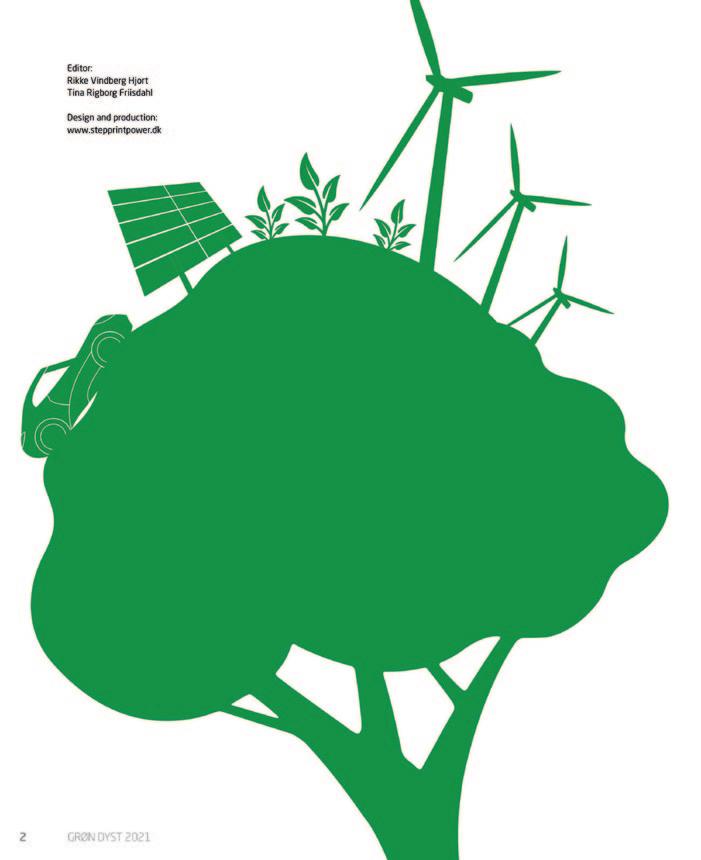

GRØN DYST GREEN CHALLENGE 2025
Student conference on sustainability and the environment and climate technology
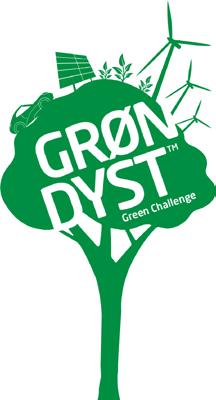
This publication was produced in connection with Green Challenge 2025, the annual student conference on sustainability, environment, and climate technology at the Technical University of Denmark (DTU).
Publisher
Technical University of Denmark (DTU)
Anker Engelunds Vej 1, 2800 Kgs. Lyngby, Denmark www.dtu.dk
Editorial Team
Laura Gade-Rasmussen, Project Manager, Green Challenge
Helle Damgaard Krogh, Project Manager, Green Challenge
2
Design and Layout
Anders Roll www.andersroll.com
Photographer Marie Bentzon www.mariebentzon.com
Date of Publication
June 2025
Contact
Email: groen-dyst@adm.dtu.dk
Phone: +45 93 51 07 34
Copyright © 2025 Technical University of Denmark. All rights reserved.

15 Years of Green Challenge
Welcome to DTU and to Green Challenge 2025, where we celebrate 15 years of sustainable solutions, green innovation, and the engineer’s vital role in the green transition.
The first Green Challenge was held at DTU in 2010. It began as an educational initiative aimed at integrating sustainability, climate technology, and environmental awareness into all DTU study programmes.
Much has changed since that first conference. Back then, sustainability was an ambition — today, it is a necessity. Climate change, biodiversity loss, and resource scarcity present us with enormous challenges. These challenges demand innovation, and today, sustainability is a natural and essential part of every engineer’s work. They also offer opportunities to think differently, act wisely, and shape a future that is green, innovative, and sustainable.
Students Are the Key to a More Sustainable Future
In a world where the future can sometimes feel uncertain and overwhelming, engineers play a crucial role. Their work with new technologies and solutions carries hope. Hope — when engineers build bridges between vision and action, between research and practice, and between ideas and real-world solutions. Green Challenge is a greenhouse for sustainable ideas. Here, students, researchers, and experts come together to present s olutions that make a real difference.
For 15 years, DTU has integrated sustainability into research and education, and we continue to push the boundaries of what technology can achieve. The conference supports the UN’s 17 Sustainable Development Goals, and the projects presented today may be the beginning of new sustainable startups, green technologies, and innovative business models — all for the benefit of society and the planet.
Where Are We Now – and Where Are We Headed?
In 2010, sustainability was a vision for the future. In 2025, it is a reality — but also a challenge that still demands action and responsibility. We’ve come a long way, but there is still much to do.
Green Challenge is a place where hope turns into action, and where the next generation of engineers shows how we can create a world that not only survives — but thrives sustainably. Welcome to a day filled with vision, sustainable solutions, and the engineers of tomorrow. Welcome to Green Challenge 2025.
Warm regards,

Lars D. Christoffersen Senior Vice President and Dean of Studies and Student Affairs DTU
Green Challenge 2025
PROGRAMME 2025
GRØN DYST / GREEN CHALLENGE
9.00 - 9.30
Registration for students
9.30- 10.00
Registration for judges
10.00-10.45
Welcome speeches by Anders O. Bjarklev, President of Technical University of Denmark and Thor Deibert, President of PF.
Introduction to sustainability at DTU by Prof. Michael Hauschild & Prof. Tim McAloone, Centre for Absolute Sustainability
10.45-12.30
Judging the projects
12.30-13.15
Lunch
13.15-15.15
Judging the projects
15.15-15.30
Deliberation of projects
Coffee break
15.30-16.20
Panel discussion
16.20-17.00
Award Ceremony with Lars D. Christoffersen, Senior Vice President and Dean of Studies and Student Affairs
17.00
Celebration, lounge with DJ, food truck and bubbles
FIND YOUR WAY
DTU Skylab, Centrifugevej 374, Kongens Lyngby
STAGE AREA
OPEN SPACEEXHIBITION
THE GARDEN
Located in dev hall but not registered:


STUDENTS LOUNGE
JUDGES LOUNGE
GLASS HALL
ARENAEXHIBITION
MAIN ENTRANCE CENTRIFUGEVEJ 374

DEVELOPER HALL
CAFÉ
1. FLOOR GROUND FLOOR
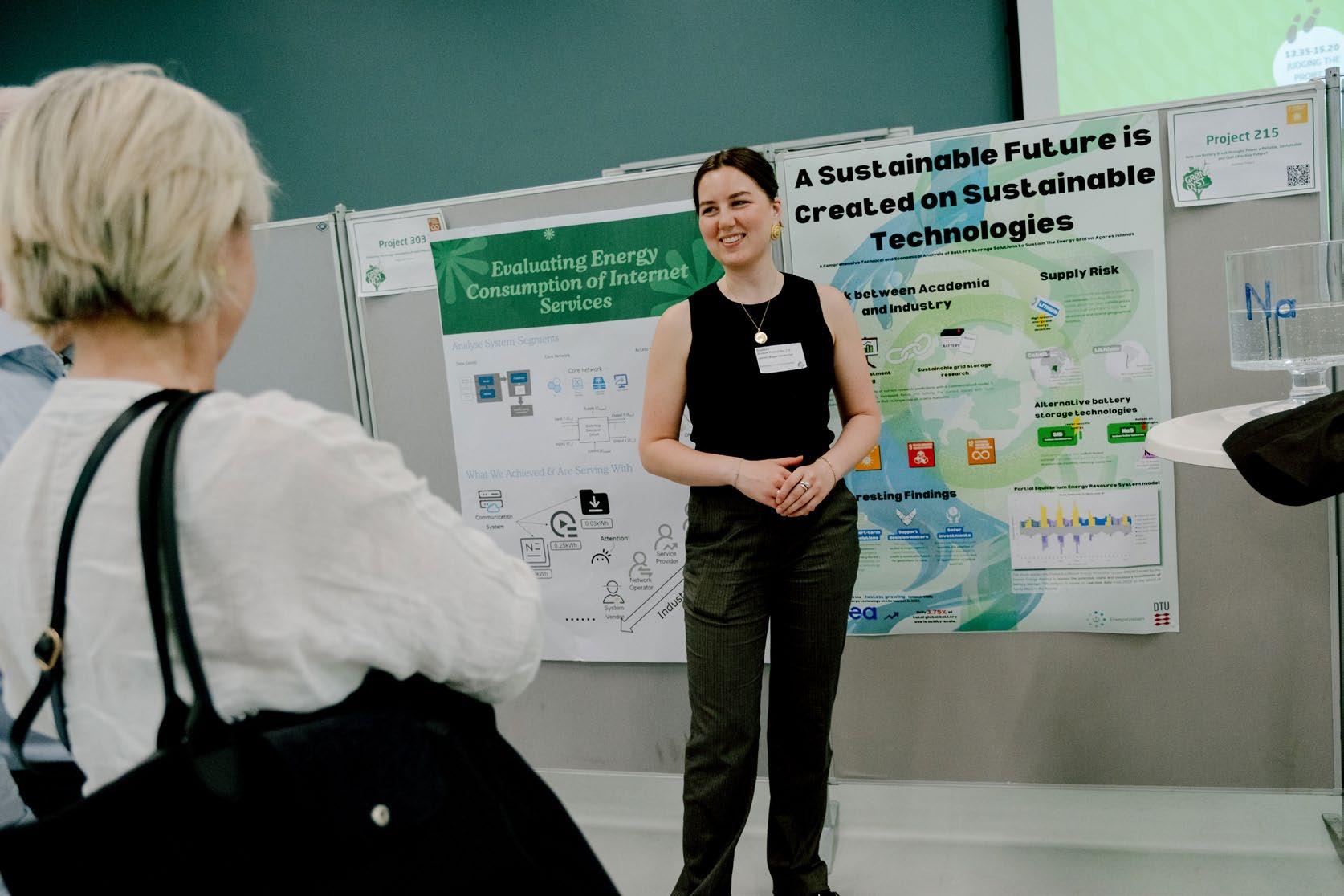
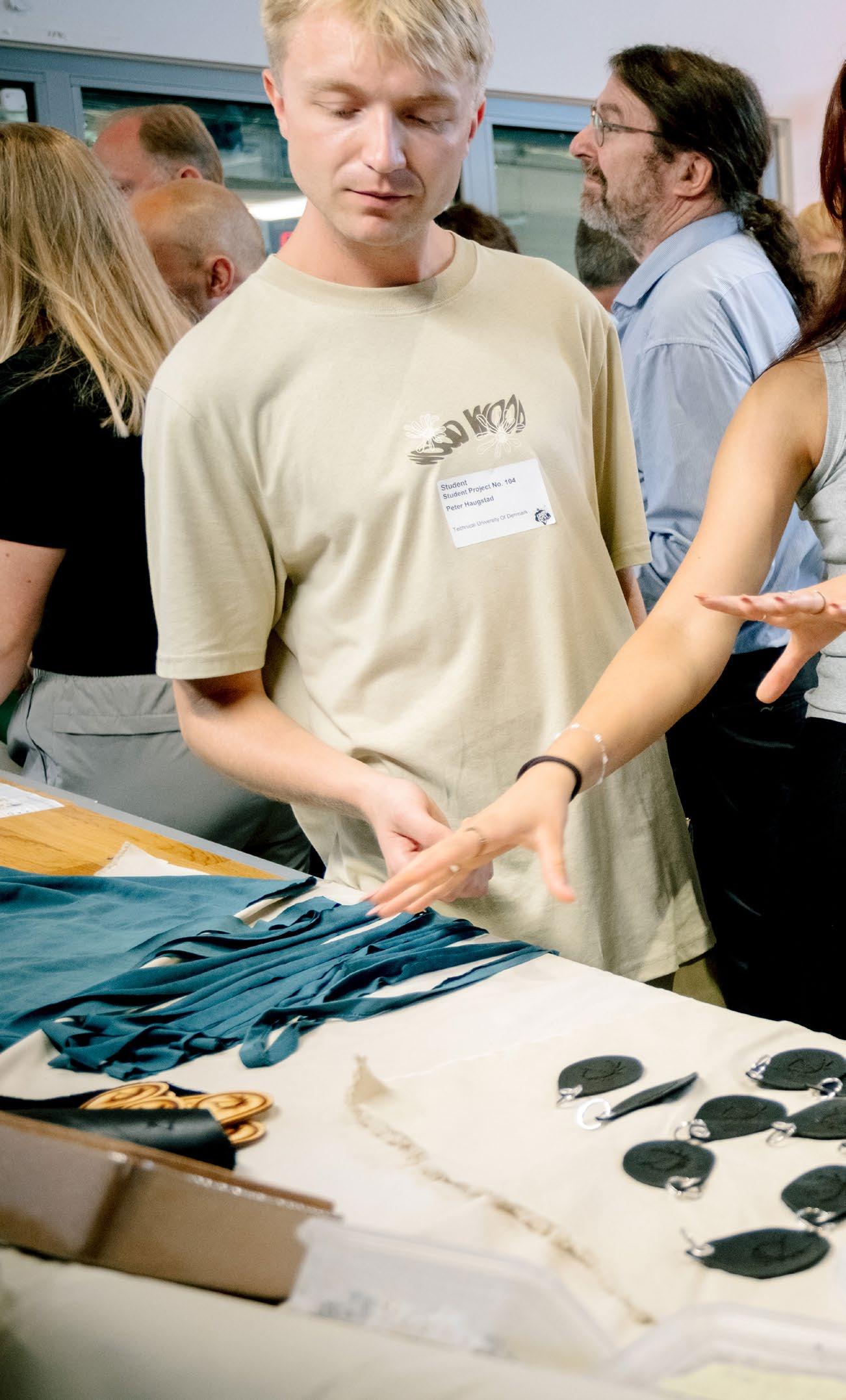


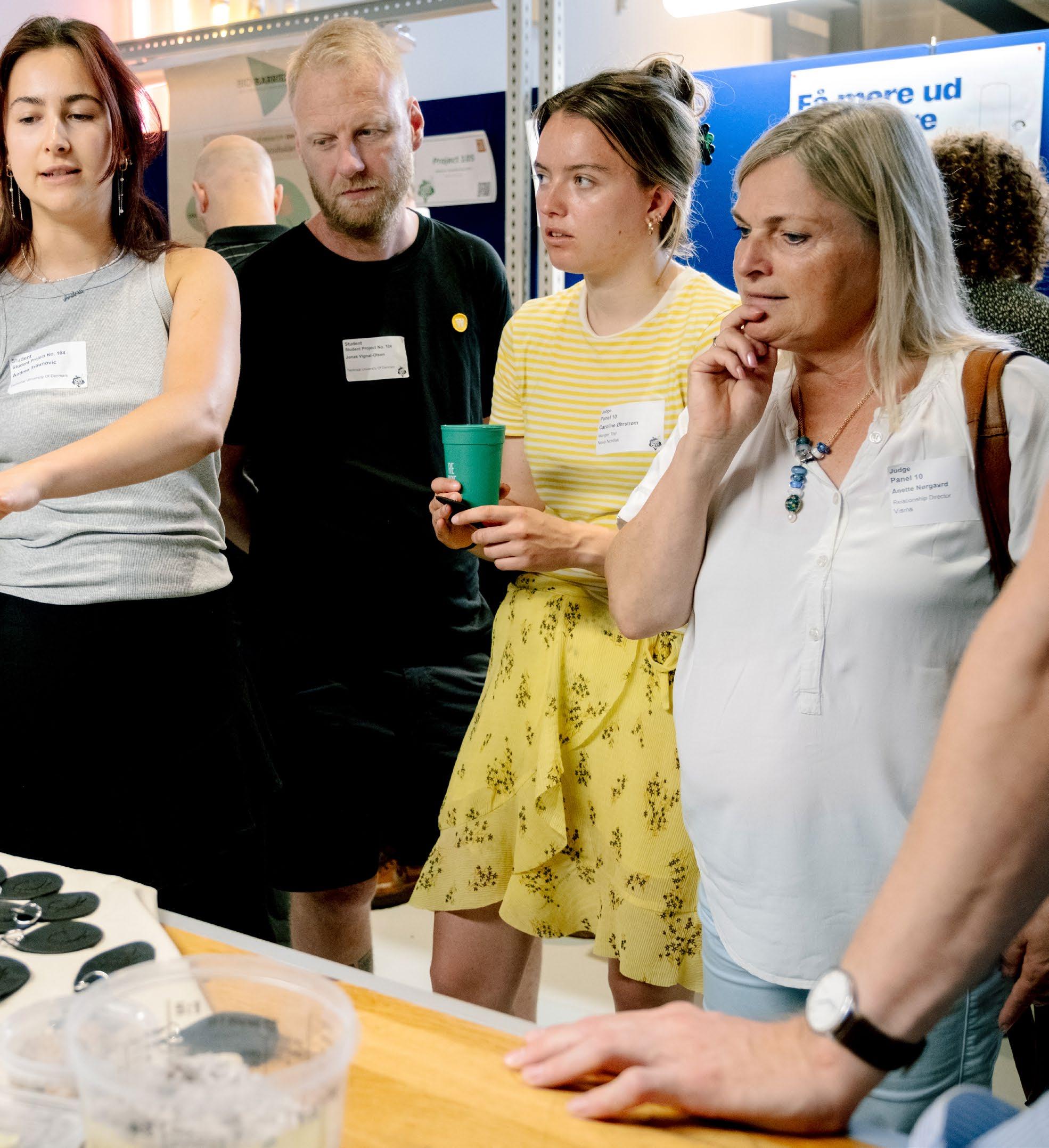
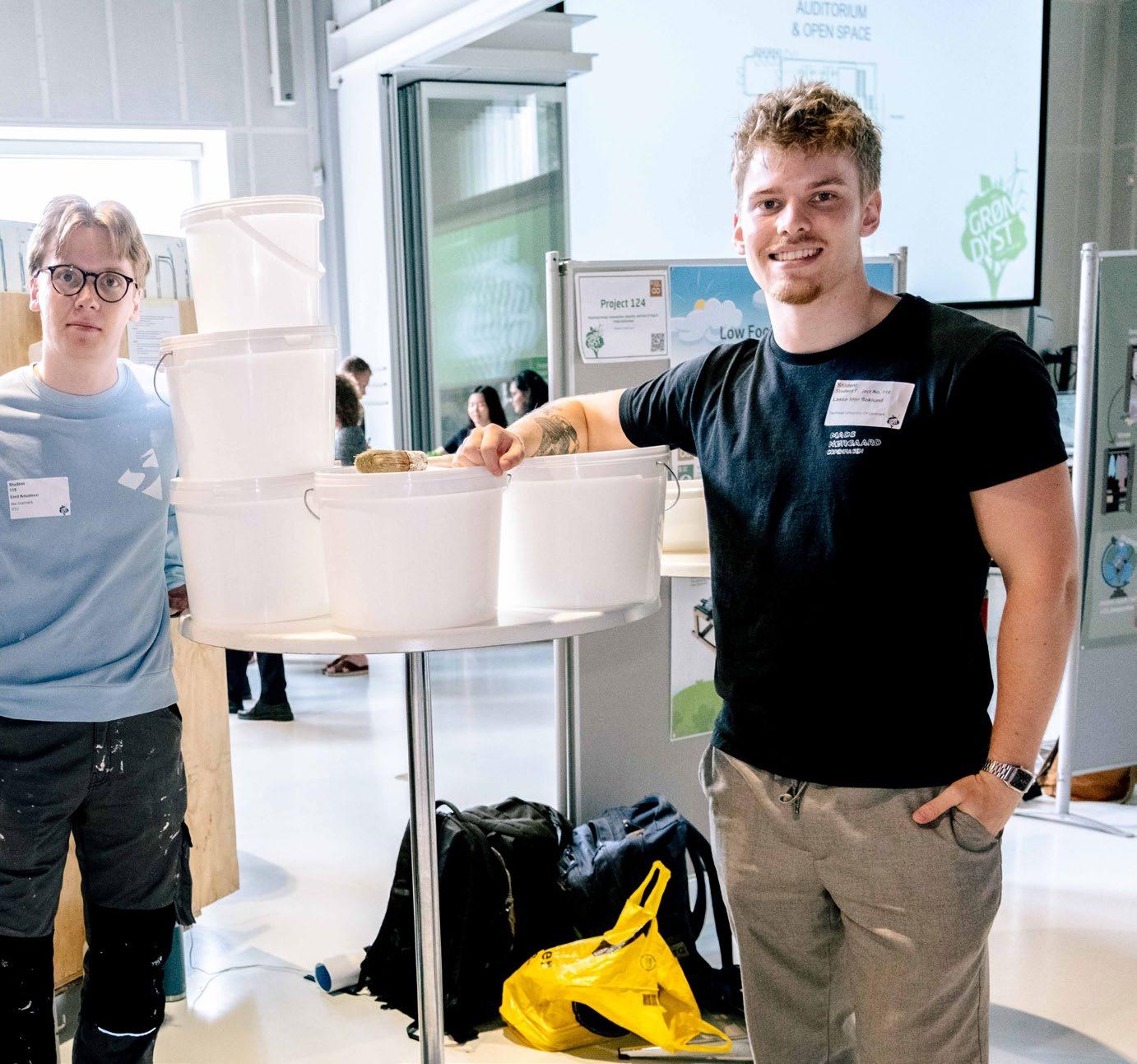
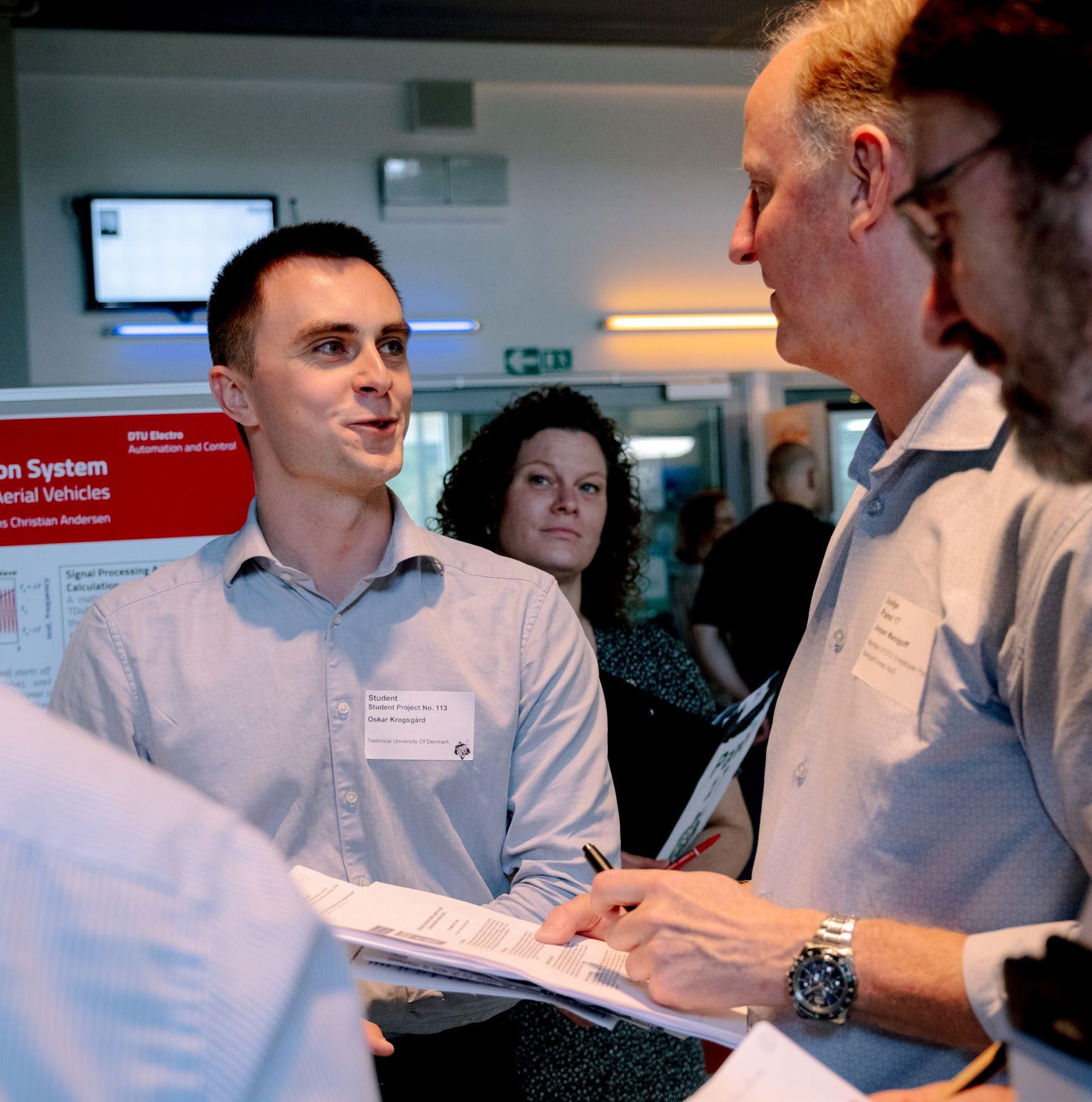
Green Challenge Panel Discussion What happens after GREEN CHALLENGE?
Date: 27 June 2025
Time: 15:30–16:20
Place: Skylab Stage, DTU
Celebrate 15 years of sustainable innovation at DTU
Join us for this year’s inspiring panel at GREEN CHALLENGE 2025 an opportunity to hear what happens after the spotlight fades.
Three former participants return to DTU to share how GREEN CHALLENGE shaped their careers, values, and real-world impact.
• How did the experience influence their path?
• What did it mean to win – or not win?
• How has their view on sustainability evolved since they stood where you are now?
Meet the three former DTU students for an open-hearted discussion about the future of sustainability, engineering and career choices. Whether you’re a student seeking inspiration, a teacher nurturing the next generation, or part of industry driving the green transition, this is your moment to connect, reflect and engage.
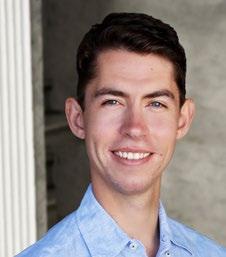
Mads Tvillingaard Bonde
Winner in 2010
Mads is an entrepreneur, leader and researcher with a focus on radical innovation in education and biotech. He is the chairman and founder of Labster, a laboratory simulation platform used by millions of students at universities globally.

Caroline Tromer Dragsdahl
Participated in 2017
Caroline is former President of Polyteknisk Forening. Currently a Product Manager at Novo Nordisk and board member in multiple organisations. She is driven by a vision of how technology can create a more sustainable and people-centered future.

Johan C. S. Vangstrup
Winner in 2021
Jonas is the founder of Paint’R along with Sofie Winge-Petersen and Victoria Søgaard. Paint’R is a young company that has developed an innovative and more sustainable packaging solution for the painting industry.
Moderator: Charlotte Koldbye Science journalist, author, and communications advisor
Three Stands to Boost Your Project
At Green Challenge, innovation doesn’t stop when you’re not pitching to the judges. During the time between the pitches, students have the opportunity to visit three dedicated stands offering expert advice, guidance, and inspiration to help develop their ideas even further. So when you’re not pitching — take the chance to explore, ask questions, and get inspired. Innovation happens everywhere at Green Challenge!
Technological Institute – Inventor Guidance
IDA – Crowdfunding Opportunities
The Danish Society of Engineers (IDA) introduces their crowdfunding platform, where aspiring entrepreneurs can raise funds for product development. With support from IDA members and other interested, students can gain the financial boost needed to take their startup to the next level.
At this stand, students can receive professional advice on how to bring their ideas to life. Whether you’re working on a prototype, wondering about idea protection and patents, or trying to prioritize among multiple concepts, the Technological Institute is here to help. They offer:
• Feedback on whether your idea has potential
• Guidance on market opportunities
• Help with contacting potential licensees
• Support for self-driven development (they don’t judge your idea!)
DTU Skylab – Startup Support
If you’re dreaming of turning your project into a startup, Skylab is the place to go. As DTU’s hub for innovation and entrepreneurship, Skylab offers resources and mentoring to help students take their first steps as entrepreneurs. Learn how to build your business model, connect with the right people, and grow your idea into a viable venture.
Assessment Criteria
All projects for the Green Challenge are assessed according to the same criteria
Assessment Criteria
1. Is the project well-structured and clearly communicated?
2. To what extend is the positive impact on the UN Sustainable Development goals made probable?
3. To what extent is it visionary and/or innovative?
Considerations and follow-up questions for the judges when judging the project
All projects for the Green Challenge are assessed according to the same criteria. The following is a list of questions to consider for each assessment criteria while judging the sustainable Green Challenge student projects.
1. Is the project well-structured and clearly communicated?
• Have the students defined the problem well?
• Is there a clear thread running throughout the presentation, from problem to solution?
• Is there cohesion between the visual and oral presentation?
• Is the message clear?
2. To what extent is the positive impact on the UN Sustainable Development Goals (SDGs) made probable?
• Have the students assessed the sustainability implications of their idea or concept?
• people – planet – profit
• Have they demonstrated that it is an improvement compared to what it replaces?
• Have they taken a life cycle perspective on their idea or concept?
• Have they considered all activities that are needed for this product/idea to be:
• produced
• distributed
• used and maintained
• treated at its end of use
• Are there environmental or social aspects that they have overlooked and are there potentials for problem shifting?
3. To what extent is it visionary and/or innovative?
• Have the students tested the problem on users?
• How probable is it that the technology can be applied in the desired manner?
• Are the findings surprising?
• Have various ideas been considered prior to finding the solution?
Abstracts BACHELOR COURSE
Your Social Media Carbon Footprint
R. Tudose Information and Communication Technology, KTH Royal Institute of Technology
INTRODUCTION
Over the years, people have developed the habit of continuous and unsustainable engagement on social media platforms. While sharing content online may be perceived trivial, people are not aware of the immense resources, i.e. electricity and water, needed to power the data centers that enable us to use these platforms. The quantity of such resources is directly proportional to users’ online activity. In other words, the more we post, scroll and like content, the more pressure do we put on data centers, which is against reaching SDG 12.
METHODOLODY
My paper proposes a digitalization innovation to this issue, namely the implementation of a “Carbon footprint” tracker in all social media and streaming applications. The purpose of this tool is to promote more sustainable online behavior by raising awareness among users. The methodology behind my paper is conceptual research, i.e. literature review.
RESULTS
Following Meta's time tracker's succes on social media platforms, the "Carbon footprint" tracker has the potential to raise awareness about screen time on these platforms, however with a focus on displaying the user’s environmental impact in terms of their carbon footprint. Educating people about this matter can gradually reduce the demand on data centers, in time leading to social media consumption aligning with the 12th Sustainable Development Goal.
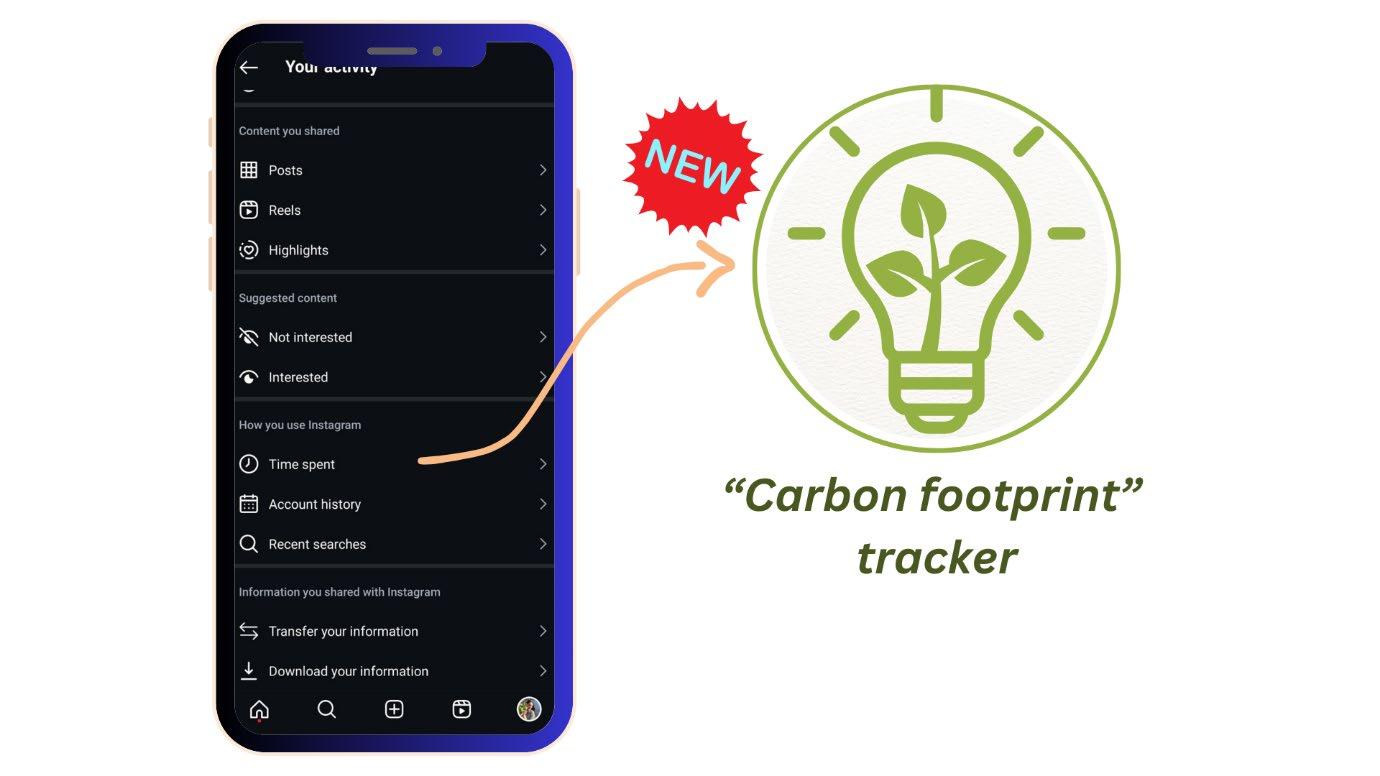
CONCLUSION
From a technical standpoint, the implementation of this tool should not posses any challenges. The time spent by a user on social media is already available (i.e. Meta products) and should only be multiplied by the researched CO2 emission generated by the app itself. By raising awareness about the environmental footprint associated to a person's online engagement, the digital consumption will in time align with the 12th Sustainable Development Goal. Every meaningful change starts first with proper education and awareness!
Design of the ”Carbon footprint” tracker on Instagram.
A web extension for redirecting online shoppers to second-hand alternatives
E. Mand Business Adminstration , TalTech (Tallinn Universtity of Technology)
INTRODUCTION
Fast fashion has created a culture of overconsumption driven by emotional spending and constant exposure to trends. Consumers often face difficulty finding accessible, stylish, and sustainable alternatives when shopping online. Our project addresses this issue by developing a browser extension that redirects users to second-hand alternatives in real-time while shopping on fast fashion platforms.
METHODOLODY
Our team applied a user-centered design process, starting with empathy mapping, ideation workshops, and a 50-idea brainstorming sprint. We created an "Impact vs. Effort Matrix" to select two feasible, high-impact ideas. The chosen concept - a browser extension that suggests second-hand product alternatives - was refined through low- and high-fidelity prototyping. Three user testing rounds were conducted: interface preference (A/B testing), trust factor analysis (image/price quality), and prototype walkthroughs. Tools such as Figma and Canva were applied.
RESULTS
User testing confirmed that consumers value second-hand alternatives when presented with high-quality images, clear pricing, and reliable delivery information. Most users preferred sidebar-style suggestions to avoid disrupting the main browsing experience. The concept was well received, though feedback highlighted a desire for expanded options beyond used items. The browser extension was seen as a viable tool not only for eco-conscious shoppers but also for mainstream users, provided it offers convenience and savings.
CONCLUSION
Our browser extension promotes responsible consumption by offering second-hand alternatives during online shopping, directly addressing SDG 12 (Responsible Consumption and Production). Through testing and iteration, we have validated both user needs and the solution’s usability. Next steps include developing a working prototype and exploring partnerships with second-hand platforms like Vestiaire Collective. The project demonstrates how digital tools can nudge consumers toward more sustainable habits, without sacrificing style or convenience.
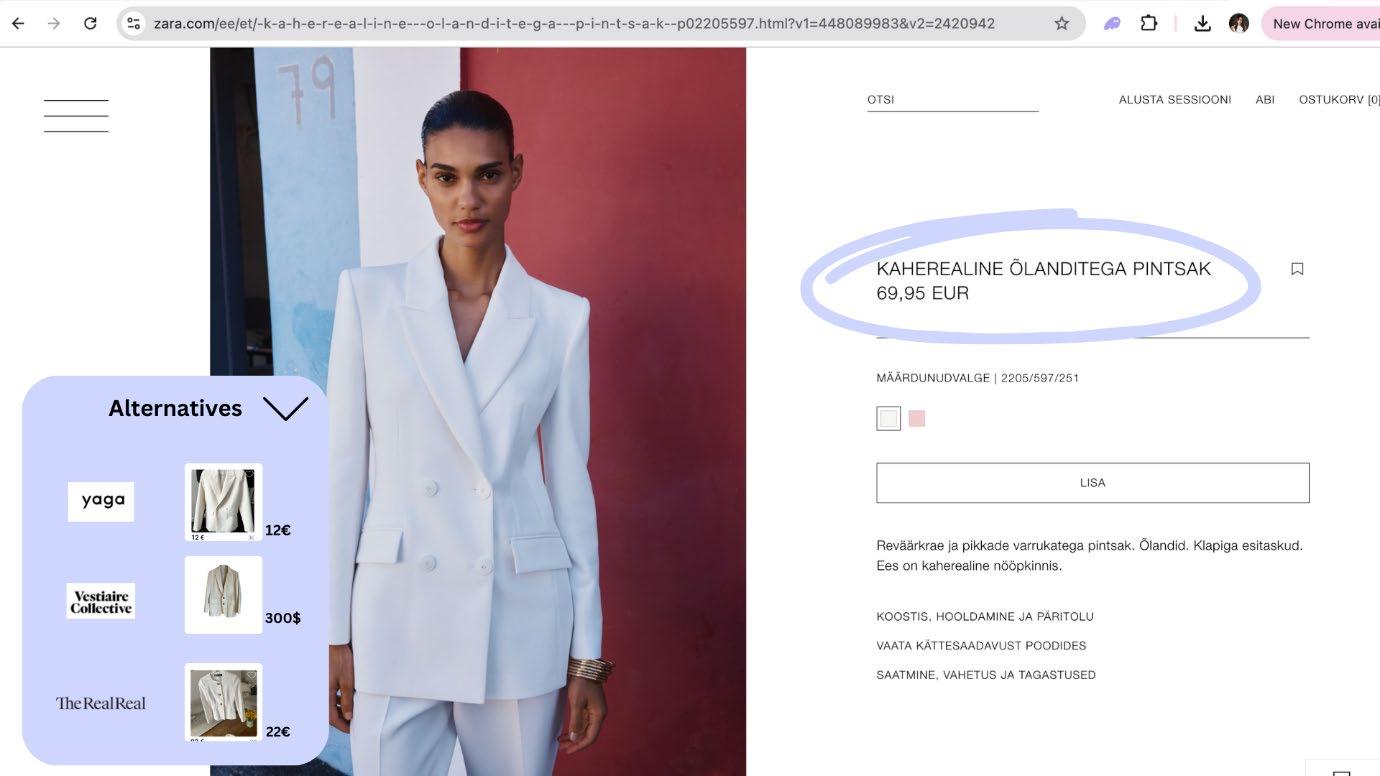
Flywheel Project
A. Cadell and S. Dobrowolski General Engineering, Technical University of Denmark
INTRODUCTION
Transportation accounts for 15 percent of global emissions, making vehicle electrification essential. However, slow charging remains the top concern for 46 percent of potential electrical vehicle (EV) buyers. The primary cause for slow speed charging is grid power limitations. A method provide high power to EVs without spending billions of dollars upgrading a country’s grd would drastically accelerate vehicle electrification and therefore the green transition as a whole.
METHODOLODY
We are planning on building a flywheel with the ability to store 25 EVs worth of energy and discharge at up to 1MW, enough to support high speed charging for even the largest semitrucks. With this system stationed at a charging point, operators would be able to strategically charge the FESS (Flywheel Energi Storage System) when electricity price is low and charging demand is low, and discharge it later when electricity prices are higher and demand too. This way charging stations can charge more cars for less money and EV owners can charge faster.
RESULTS
By making this project, we hope to incentivise the purchase of EVs through making them more convenient from a buyers perspective. With this we will be working with SDG 7, 11 and 13 as well as helping the EU reach its targets of vehicle electrification. With the high powers that the system can deliver, we also hope to pave the way for electric trucks to hit the market faster than anticipated by making them economically viable to operate.

CONCLUSION
This flywheel will have numerous benefits on both the EV charging system as well as EV owners. Beyond this, the flywheel technology could later be used for many other applications such as ancillary services renewable energy storage, micro grid and many others. With the new technologies that have recently been made available, a flywheel of this spec has the potential to change the world.
F. Rasmussen, S. Thorup and A. Wooller Process & Innovation, Technical University of Denmark
INTRODUCTION
Imagine walking through Kongens Have in Copenhagen and looking at the ground and thinking about how much plastic is on the ground from beer and soda packaging, which will end up in nature or in the best case scenario getting incinerated in powerplants.
METHODOLODY
Plastic pollution is a big issue in the world, with single-use packaging being particularly problematic. We have chosen to focus on the packaging that comes with cans, as people often discard the plastic that comes with the cans in nature or at festivals, while the cans themself get reused. The problems scale is clear with these issues mentioned, they are contributing to pollution in nature and the oceans. Furthermore most of the single use plastic in Denmark is incinerated and contributes even more to climate change.
RESULTS
Our solution to this worldwide problem is to remove the single use plastic and replace it with a reusable alternative, which the breweries will get in return through the danish return system “PANT”. Our product ZERO: 6 is one of the first solutions to these issues mentioned. First of all, our product is creating an incentive for the customer to return the packaging, which helps reduce waste in nature and oceans. Furthermore, the product can be reused, which contributes to a more responsible production cycle making it more economically circular.
CONCLUSION
To sum up, plastic is a huge problem for our environment. And when you mix in alcohol there is even less of a chance that the plastic gets sorted correctly. Our solution is to implement the danish return system, which is already well implemented in the danish culture and habits, to avoid leaving plastic in nature. We hope for a future where you can walk through a park or festival, without having to walk through lots of plastic packaging from different types of cans. It is our mission to help people choose the green alternative.
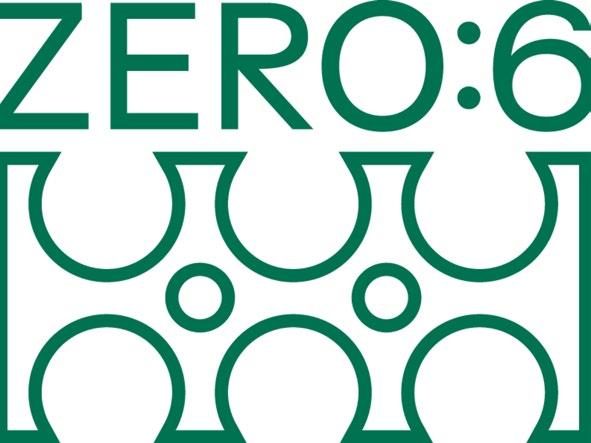
Event nexus: a digital platform for sustainable event planning in university campuses
A. Agrawal, V. Chand and T. Meena Indian Institute of Technology Bombay
INTRODUCTION
University campuses are hubs of vibrant student activity, with thousands of events occurring annually — from academic seminars to cultural nights. However, behind the scenes lies an inefficient and unsustainable system. At IIT Bombay, over 2,000+ events are hosted each year, often coordinated via email chains and paper forms. This fragmented approach leads to venue clashes, wastage of materials, and logistical confusion. Furthermore, the invisible environmental impact limits the institution’s ability to manage its carbon footprint.
METHODOLODY
Event Nexus is a web-based platform developed by us that brings sustainability and structure to event planning. It enables users to digitally submit event proposals, seek automated approvals, book venues, and coordinate logistics from a single portal. Sustainability is embedded at every step — from QR-based check-ins and automated e-certificates to carbon footprint estimators based on travel, material use, and energy consumption. Organisers receive real-time nudges to adopt low-impact practices, fostering climate-conscious decision-making.
RESULTS
Event Nexus targets student bodies, faculty coordinators, clubs, and administrative offices, creating a centralized, transparent event ecosystem. During an 8-week pilot across 72 events, the platform led to:
• 14,000+ sheets of paper saved, eliminating physica forms and certificates
• ~115 kg CO2-eq avoided, based on standard lifecycle emission data for paper and diesel printing
• 3.2 hours saved per event, due to reduced back-and-forth and faster approvals
• 92 percent user satisfaction, with positive feedback on usability, speed, and sustainability

CONCLUSION
Event Nexus aligns directly with the UN Sustainable Development Goals (SDGs), making it not just a digital upgrade, but a strategic sustainability intervention:
• SDG 12: Responsible Consumption and Production — through material reduction and waste avoidance. It also aligns with SDG 9 and SDG 13 By reducing resource use, enabling data-driven planning, and promoting digital sustainability, Event Nexus offers a replicable and impactful solution — one that can be adopted by universities globally seeking to green their campus operations.
TANGEFULD
N. Leerberg, A. Klitsgaard, C. Andersen, F. Ibbo, C. Højly and T. Ovens Process & Innovation, Technical University of Denmark
INTRODUCTION
Our oceans are in crisis, rising CO2, acidification, and biodiversity loss are threatening marine life. Seaweed offers a natural solution, producing up to 70 percent of the oxygen we breathe and supporting ocean ecosystems. But starting a seaweed farm today is expensive and complicated. Most farmers must build their own systems, which requires time, money, and technical skill, therefore slowing adoption. By making seaweed farming accessible, we help protect marine ecosystems and our ocean in line with UN Global Goal 14.
METHODOLODY
We’re building Denmark’s first plug-and-play seaweed farming system. A ready-made, modular setup designed for simplicity and scalability. In partnership with “Blæret Tang”, a Danish organization dedicated to promoting sustainable seaweed use and marine innovation, we’re testing prototypes in real marine environments. Our approach combines a physical product with installation services, tailored support, and easy onboarding to eliminate costly technical barriers and empower new farmers of all backgrounds.
RESULTS
Initial development has provided access to coastal test sites and strong community interest. By offering a ready-made, user-friendly system, we simplify seaweed cultivation and make it more widely accessible. Our pilot efforts have shown that with the right support, individuals and institutions are eager to participate in marine sustainability efforts.
CONCLUSION
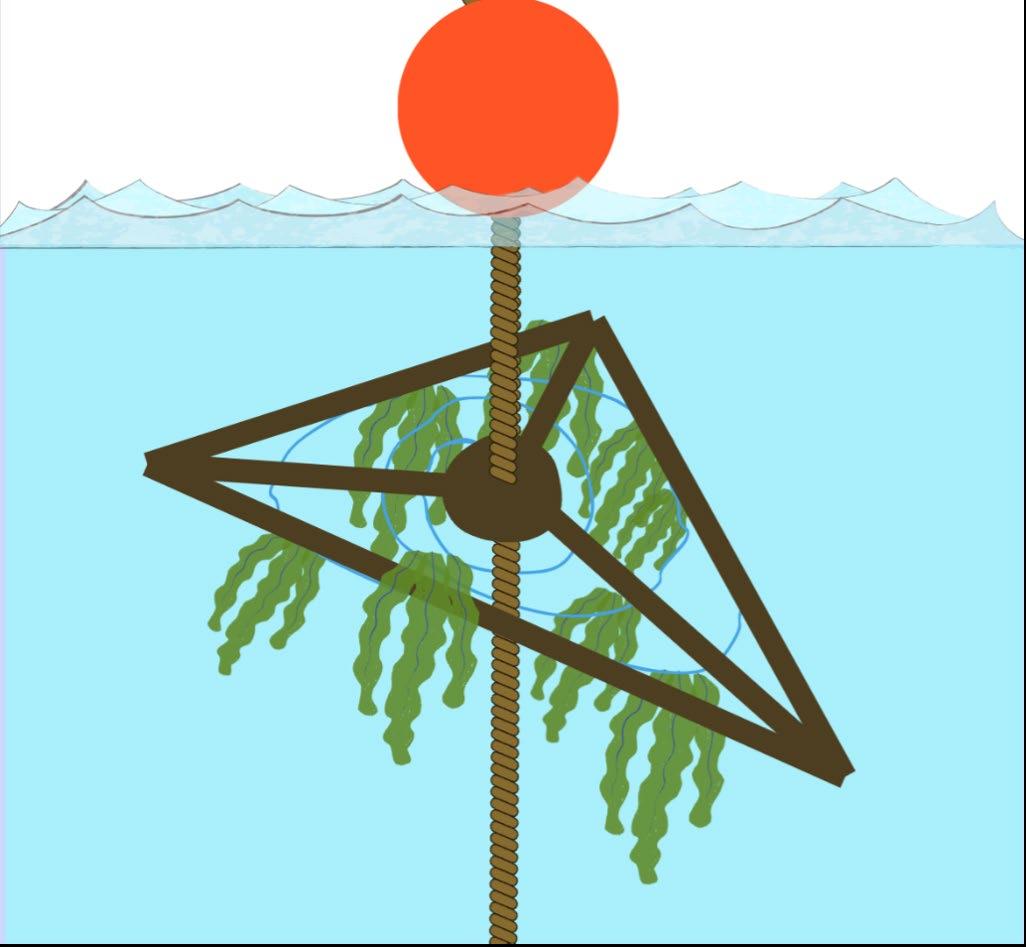
Seaweed is part of the future. Our solution lowers the barriers to entry, empowering more people to participate in both the blue economy and the green transition. By promoting sustainable seaweed farming aligned with SDG 14, we support ocean health while building a scalable, impact-driven business. Our Seaweed farms is not just a product, it is a path to a more sustainable future.
Illustration of our seaweed farming system
Using Oxygen from Electrolysis to Restore Mussels and Improve Water Quality
H. Renze and J. Testerman
Civil Engineering, University of Maryland, College Park
INTRODUCTION
Many Danish waters near shore have dissolved oxygen (DO) content of 4-6 mg/L due to eutrophication, decreasing survival of aquatic organisms (Datastream, n.d.; European Environment Agency, 2025). By-product oxygen from electrolysis, the splitting of water into hydrogen (fossil fuel alternative) and oxygen by electric current, is not utilized but could be pumped to water bodies to increase DO (Kato et al., 2005). Using this oxygen to restore mussel beds, which naturally filter phosphorus and nitrogen from water, would improve aquatic conditions.
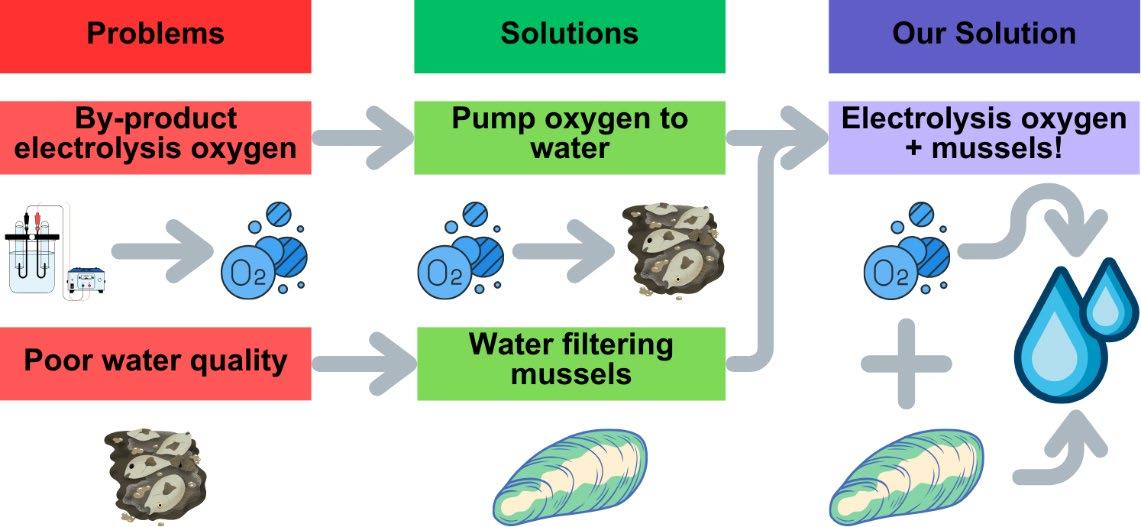
METHODOLODY
Literature research was conducted on Danish water quality, electrolysis, and aquatic organisms. Online sources demonstrated the demand for healthier aquatic ecosystems and the proven capabilities of each underlying technology. Course guest lecturers provided background about Power-to-X and Danish culture and technology. Interviews are being conducted to gain detailed design information. From existing electrolysis locations, one was chosen as a potential pilot project site.
RESULTS
Excess oxygen from electrolysis will be sent to nearby water via Oxygen Saturation Technology (Vertex Aquatic Solutions, n.d.), which supplies a consistent, healthy DO of 8-14 mg/L. Mussels will be reintroduced via cages once DO increases, increasing biodiversity as mussels remove nitrogen and phosphorus. The HØST plant in Esbjerg, an upcoming electrolysis plant adjacent to Fanø Bay, is an ideal first project location due to its proximity to seawater, reducing oxygen pumping costs, and poor water quality, increasing mussel utility.
CONCLUSION
Our idea addresses SDG’s 6: Clean Water and Sanitation, 7: Affordable and Clean Energy, and 14: Life Below Water. Pairing oxygen from electrolysis and mussels employs existing technology to greatly enhance ecosystem health. This idea could be scaled to future electrolysis plants and adjacent fjords and bays once feasibility is demonstrated, creating more healthy aquatic ecosystems throughout Denmark.
Solution Overview - Electrolysis + Mussels
Revolutionizing Wingturbine Wings Manufacturing
L. Kristensen, M. Skou Larsen, I. Bisset, Z. H.a. El Hashemi, D. Yildirim, F. Hein and J. R. Rada Global Business Engineering, Technical University of Denmark
INTRODUCTION
Manufacturing dominates impacts (electricity & polyester resin). Switching to PMMA (polymethylmethacrylat) thermoplastic cuts climate impact by 63 percent and electricity use by 71.42 percent, with 60–86 percent drops in water use, eutrophication, and ozone harm. Trade-offs: higher acidification from PMMA production. Adding a steam heat pump may save 70 percent more electricity.
METHODOLODY
Life cycle assessment (LCA) is a standardized and structured method used to evaluate the environmental impacts of a product, process, or service throughout its entire life cycle. It involves quantifying material and energy use, as well as emissions and waste generation, from production to disposal. The methodology follows international standards such as ISO 14044:2006.
RESULTS
The LCA of Vestas' V236-15MW blade shows manufacturing dominates impacts (electricity: 85 percent climate, polyester resin: 64 percent fossil depletion). Switching to PMMA thermoplastic reduces electricity use by 71.42 percent, cutting climate impact by 63 percent. Retrofitting steam heat pumps in Vestas plants could further lower electricity demand by ~70 perent, amplifying savings. Trade-offs include PMMA's higher acidification (+64.62 kg SO2-eq). Circular economy benefits: recyclability and second-life uses (e.g., cement additives).
CONCLUSION
Adopting PMMA thermoplastic blades reduces climate impact by 63 percent and energy use by 71 percent, while retrofitting steam heat pumps in Vestas plants could slash electricity needs by another ~70 percent. Despite PMMA’s acidification trade-off, the combined approach aligns with SDGs 7 (clean energy) and 13 (climate action). Recommendations: hybrid designs, heat pump integration, and recycling R&D to advance sustainable wind energy.

The future solution of windturbine manufacturing
Silent Streets
V. Caicedo, K. Erman and B. De Falco Civil Engineering, University of Maryland
INTRODUCTION
Traffic noise affects around 785,000 homes in Denmark and contributes to serious health issues such as sleep disturbance, stress, and cardiovascular disease. The primary source is tire friction, which is even more pronounced in heavier electric vehicles. Porous asphalt is widely used to mitigate this, but its effectiveness declines as debris clogs its pores. Our project introduces an affordable and scalable sensor-based system to monitor road conditions and optimize cleaning schedules, preserving long-term noise reduction.
METHODOLODY
To keep porous asphalt functioning effectively, we designed a cost-efficient system using moisture and sound sensors to detect pore clogging. Sensors are installed at 150–400m intervals along road sections most prone to clogging, especially those near greenery or floodprone zones. Real-time data is collected hourly and analyzed daily. AI identifies trends, filters anomalies, and predicts cleaning needs. This method enables targeted, sustainable maintenance and ensures the continued acoustic performance of the asphalt.
RESULTS
Porous asphalt reduces tire-road noise by 3–6 dB, comparable to closing a car window or moving from a city to a quiet suburb. Our sensor network detects changes in moisture and sound levels to monitor performance. The AI processes this data to schedule cleanings only when needed, avoiding excess interventions and improving efficiency. The system also alerts crews to signs of wear or degradation. Overall, this approach maintains strong noise reduction while reducing costs and extending the road’s usable life.
CONCLUSION
Porous asphalt is a key noise-reduction tool in Denmark, but it requires proper maintenance to remain effective. Our proposed solution, a sensor-based system supported by AI, monitors pore clogging in real time using moisture and noise data. By collecting and analyzing trends, the system ensures timely, targeted cleaning. This preserves the material’s noise-reducing benefits, lowers maintenance waste, and increases pavement lifespan, ultimately contributing to healthier, quieter, and more resilient urban infrastructure.
Vibrational Resonance Harvesting from Airport Runways
R. McGowan and N. Fake Civil Engineering, University of Maryland, College Park,Civil Engineering
INTRODUCTION
Aircraft produce high volume, high frequency sounds from their jet turbines. Jet turbines are extremely powerful engines, with each engine on a Boeing-777 passenger plane outputting 61,770 horsepower (Embry-Riddle Univ.). One form of energy that is emitted from these engines is sound energy. Sound energy can be harvested and converted into electric potential energy, powering the airport’s infrastructure.
METHODOLODY
A beam - fixed at one end and free at the other - has a natural frequency. When this natural frequency matches that of a sound wave, the beam vibrates. We can use a piezoelectric actuator, a device to convert this kinetic energy into electric potential energy. This process of energy conversions is the basis of a Vibrational Resonance Harvester (VRH). We propose to have multiple VRHs line the sides of a runway, where the power harvested from them will tie back into the runway infrastructure, powering the lights and other essential infrastructure.
RESULTS
VRHs already exist in infrastructure, matching low frequency sounds (~ 50Hz - 100Hz) of vehicles driving over bridges (Beijing Jiaotong University). We propose to scale this process, adjusting the VRH to account for the high output frequencies of jet turbines (~ 4000Hz) (ResearchGate). The amplitude of the wave produced at around 4000Hz will yield substantial mechanical energy that will be transferred into electric potential.
CONCLUSION
High frequency, high volume sounds (i.e. that of a jet turbine), are suitable power sources that can be converted to electrical energy to supply the existing grid of runways. This process of collecting energy and dispersing it into the runway electrical grid is renewable and self-sufficient, promoting the development of sustainable cities and communities.

GrønScan
M. Sørensen, C. Leonhardt and C. Hermann Process & Innovation, Technical University of Denmark
INTRODUCTION
GrønScan is a smart system that integrates expiry dates into existing barcodes, enabling automatic, stepwise discounts as products near expiration. It eliminates manual labeling, syncing discounts directly to store apps for easy customer access. Designed for seamless POS architecture integration, RedVaren scales easily across retail chains, even in differing systematic environments.
METHODOLODY
During the process, we collaborated with Føtex City through multiple conversations, usability testing sessions, and workshops to refine and optimize the product. This approach allowed us to gather in-depth user insights, identify potential pain points, and implement targeted improvements, ensuring the final solution aligns perfectly with Føtex City’s operational needs and customer expectations. We also collaborated closely with internal teams and used continuous feedback to guide enhancements.
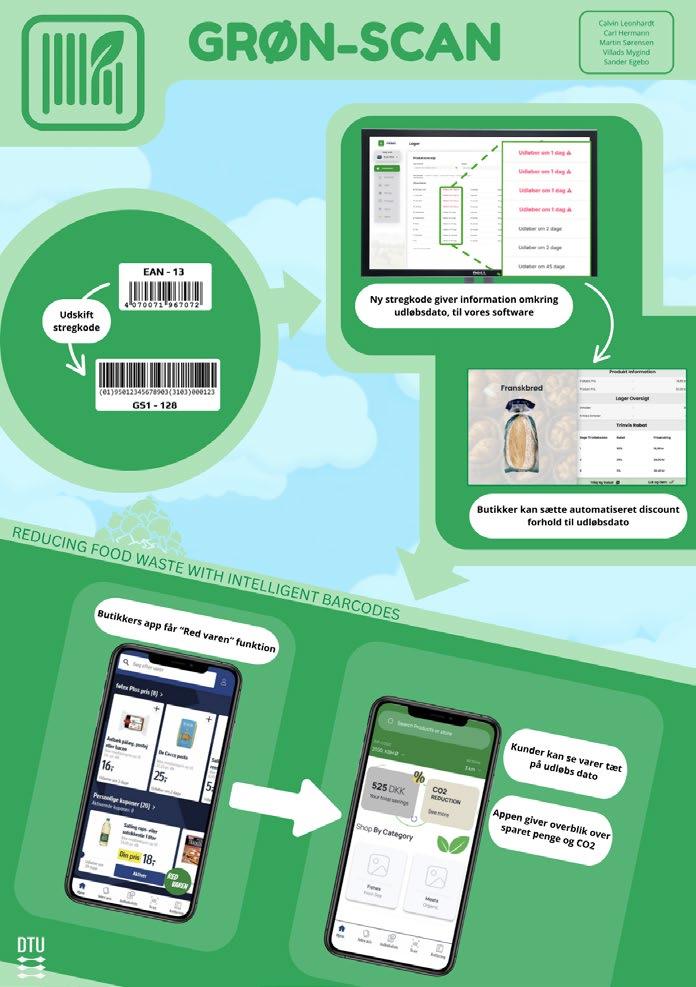
RESULTS
Føtex City has provided exclusively affirmative feedback, citing notable enhancements in functionality, user experience, and performance. They noted improvements across all targeted use cases, operational workflows, and customer touchpoints. Their endorsement underscores the success of our development and evaluation phases, reinforcing confidence in the product’s readiness for deployment and potential to deliver tangible value. This enthusiastic support also opens doors for future collaboration.
CONCLUSION
The system's automation reduces human error, improves inventory management, and increases sales of near-expiry goods — helping to cut into the 875,000 tons of food waste Denmark faces annually. Validated by the retail managers and tested at Føtex City Østerbro, the solution shows strong potential for real-world implementation.
ReDrobe
C. Rasmussen and F. Krohn Process & Innovation, Technical University of Denmark
INTRODUCTION
Traditional cloakroom systems use disposable paper tickets, leading to waste and inefficiency. Our project replaces this with a greener solution: reusable tickets made from eco-friendly plastic and fitted with magnets. When a customer hands in their jacket, staff detaches a magnetized number from the hanger and gives it to the guest. Upon retrieval, the number is returned and reattached - ready for reuse the next day, reducing both waste and resource consumption.
METHODOLODY
Our approach is grounded in the Bird-in-Hand Principle, emphasizing action based on available resources and immediate opportunities. In this case being a group-member working in a popular music venue, Vega, in Copenhagen. We have also engaged with several other venues, all expressing interest in adopting our solution. We employed pretotyping and rapid prototyping to quickly validate core assumptions and refine the solution, following the Lean Startup methodology to ensure minimal waste of time and resources.
RESULTS
Furthermore, our project aligns with the United Nations Sustainable Development Goals (SDGs), particularly the goal of reducing CO2 emissions, by minimizing paper waste, printing and promoting circular use of materials.
CONCLUSION
By combining environmental responsibility with operational efficiency, our solution offers a practical and scalable upgrade to existing cloakroom practices, enhancing user experience and supporting sustainable innovation.

BeeFriend – Automated Beehive for Protecting Honeybees in Denmark,
R. Alam and I. Pham
Bioenigneering, University of Maryland
INTRODUCTION
Denmark is facing steep declines in bee population due to climate change, mite infestations, and intensive agriculture. Bees are essential pollinators, supporting biodiversity and food production. Commercial bee colonies are critical to stabilizing global populations, but beekeepers struggle with timely monitoring and maintenance, which is crucial to colony health and survival. Currently home to about 120,000 commercial colonies, climate change in Denmark has led to warmer summers and winters, increasing environmental stress on hives.
METHODOLODY
Parasitic Varroa mites and climate instability threaten bee health. Beekeepers cite monitoring and fast action as key to preventing collapse. To address these challenges, we developed BeeFriend, a climate-adaptive beehive, that takes advantage of the mites’ temperature sensitivity. Our design uses internal sensors with a motorized ventilation panel to regulate temperature and humidity automatically. Data is sent to a mobile app for real-time remote monitoring. BeeFriend is a modified hive with enhanced ventilation to help beekeepers maintain optimal temperatures and a stable environment.
RESULTS
BeeFriend maintains internal hive temperatures of 34-36°C, ideal for bee health and limiting Varroa mite survival. Its adaptive ventilation reduces moisture and stabilizes conditions in Denmark’s humid, warming climate. The added cost over standard hives can be offset by its potential to help the 560 million DKK in annual mite treatment costs and 4.5 billion DKK in colony losses for beekeepers across the EU. BeeFriend is an alternative that allows for remote mite maintenance compared to standard chemical treatment methods.
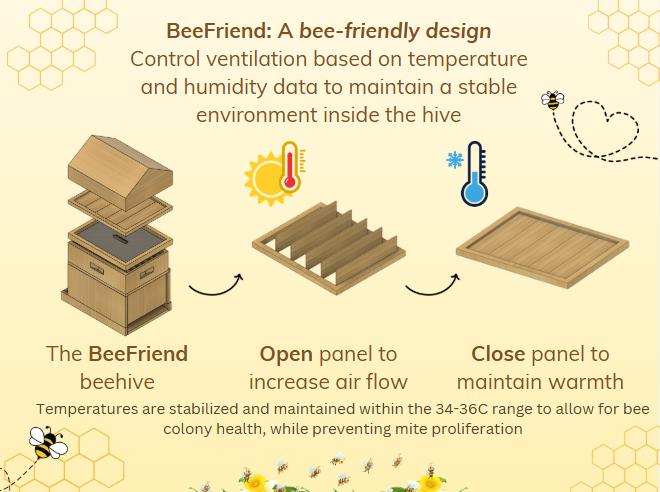
CONCLUSION
Honeybee pollination supports Denmark’s food security and economy, valued at around 1 billion DKK annually. BeeFriend is an accessible solution that simplifies hive care and supports early intervention. Addressing mites, moisture, and climate stress helps reduce costly colony losses. Adjustable to different species and climates where overheating, freezing and humidity are large issues, BeeFriend can adapt to the global challenges of climate change and supports global biodiversity and pollinator resilience in line with UN SDG 15: Life on Land.
BlueRack - A reusable can holder
K. Thomassen, A. Zepernick, S. Hansen, C. Rose and M. Ohrt Process & Innovation, Technical University of Denmark
INTRODUCTION
Millions of tons of plastic pollute oceans each year, harming biodiversity. A key contributor is single-use plastic and discarded fishing nets. Conventional beverage packaging often consists of single-use plastic which often lacks durability and is not reused. This leads to large volumes of avoidable waste and further strains marine ecosystems. To address this, we developed a reusable can holder made from discarded fishing nets, designed to replace single-use packaging and in the long run be integrated into a deposit-return system.
METHODOLODY
We applied a user centered, iterative design process rooted in Lean Startup principles. A 3D printed MVP in PLA was developed to test the concept and gather early feedback from the market. A thermoformed test disk was also developed using discarded fishing nets to test material functionality. Customer surveys and interviews provided user insights, while dialogue with stakeholders such as Warpigs, ÅBEN, Carlsberg, The Ocean Cleanup, Dansk Retursystem and many more, guided the design and business model development.
RESULTS
BlueRack is a reusable can holder made from discarded fishing nets collected at Danish harbors, designed to replace single-use beverage packaging. Its rail based design is easy to use, and durable. Our business model targets small scale beer retailers initially, with ÅBEN and WarPigs ready to test BlueRack in store. To support reuse, we propose a small refund incentive, similar to the deposit-return system. Long term, we aim to scale with Carlsberg and integrate BlueRack into the national return system, promoting a circular economy.
CONCLUSION
BlueRack offers a scalable, sustainable alternative to singleuse beverage packaging by transforming ocean waste into a functional, reusable product. The concept aligns with SDG 12 and 14 by promoting responsible consumption and reducing marine pollution. With positive early feedback from retailers and industry partners, a clear implementation plan and a path to integration within existing return systems, BlueRack has strong potential to contribute to a circular economy and protect marine ecosystems.

Prototype of BlueRack in use
Easysort - Residual Waste Sorting
L. Vilsen
Artificial Intelligence and Data, Technical University of Denmark
INTRODUCTION
EasySort is an open-source waste sorting system that combines computer vision and robotics to automate waste classification. The project aims to address the inefficient practice of shifting waste sorting responsibility onto citizens by providing accessible, automated sorting technology. The system performs waste classification and purity estimation and is expanding to include size, weight, and value assessment for prioritized sorting. A small demo robot has been developed to showcase automated sorting.
METHODOLODY
The system uses a multi-stage approach:
1. Data collection through RGB imaging on Nvidia Jetson hardware
2. Object classification using neural networks trained on annotated waste datasets
3. Sorting prioritization based on material value and processing requirements
4. Integration with robotic control systems for physical sorting
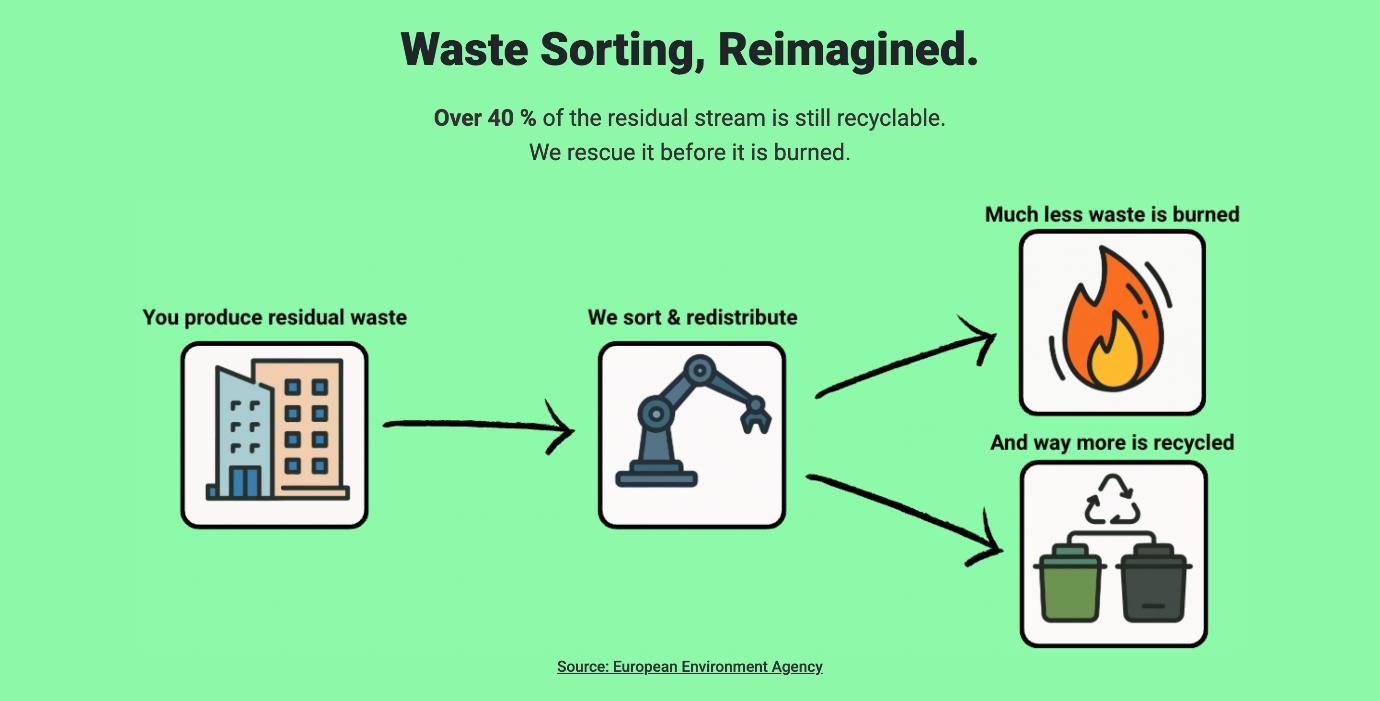
CONCLUSION
RESULTS
EasySort's AI system successfully identifies and classifies objects in residual waste streams using RGB camera input. The system enables automated sorting of mixed waste into distinct material categories, reducing the need for manual sorting by citizens. Processing waste at an industrial scale could create cleaner material fractions compared to household sorting, leading to higher quality recycling streams. Easysort is the first step to shift the Danish paradigm from citizen-based sorting to efficient centralized automation.
EasySort demonstrates that open-source automated waste sorting can improve recycling efficiency while reducing costs. The project's commitment to public ownership ensures the technology remains accessible and adaptable. By targeting the gap between sorted and recycled materials, EasySort paves the way for more efficient, automated waste management systems that benefit all stakeholders. This changes the current paradigm by moving from humans to robots, saving time, and improving recycling centers' rates by providing cleaner fractions.
The main idea behind EasySort: Sorting residual waste centrally.
NOVA, Shine Sustainably
M. Falkenberg Design & Innovation, Technical University of Denmark
INTRODUCTION
Denmark has a proud tradition of lamp design, with icons like Poul Henningsen still illuminating modern homes. With NOVA, I reimagine this legacy for a world where design must coexist with responsibility. Every day, tons of plastic become short-lived products. NOVA transforms this waste into a sculptural, lasting centerpiece. Aimed at design-lovers conscious of overconsumption, the lamp invites reflection, bringing plastic back into the home not as clutter, but as a symbol of thoughtful design.
METHODOLODY
NOVA was developed in the Industrial Design 1 course, using iterative sketching, 3D modeling, and prototyping to evolve both form and function. Emphasis was placed on clear visual communication, material choices, and lifecycle thinking, that was in line with sustainable design. Sustainable impact was continuously evaluated, aligning with course goals to explore circular design, integrate user needs, and reflect critically on how design can shape behavior and reflection.
RESULTS
The result is a 140 cm floor lamp made of recycled cast plastic slabs with a distinctive granule-textured surface, of plastics scrapped from industrial production. A spherical glass-diffuser softens the light throughout the room, while the body’s layered structure reflects a modular, repairable design. Appealing to young, design-aware users and aiming to raise awareness around material reuse, NOVA is designed as something valuable, expressive, and built to last.
CONCLUSION
NOVA demonstrates how sustainable design can go beyond functionality. By combining Nordic themes, circular principles, and material honesty, it supports SDG 12 and reflects course insights on systems thinking within design. The project challenged me to connect creative decisions with real-world environmental impact, showing how design can drive reflection and inspire users to engage in more responsible consumption.
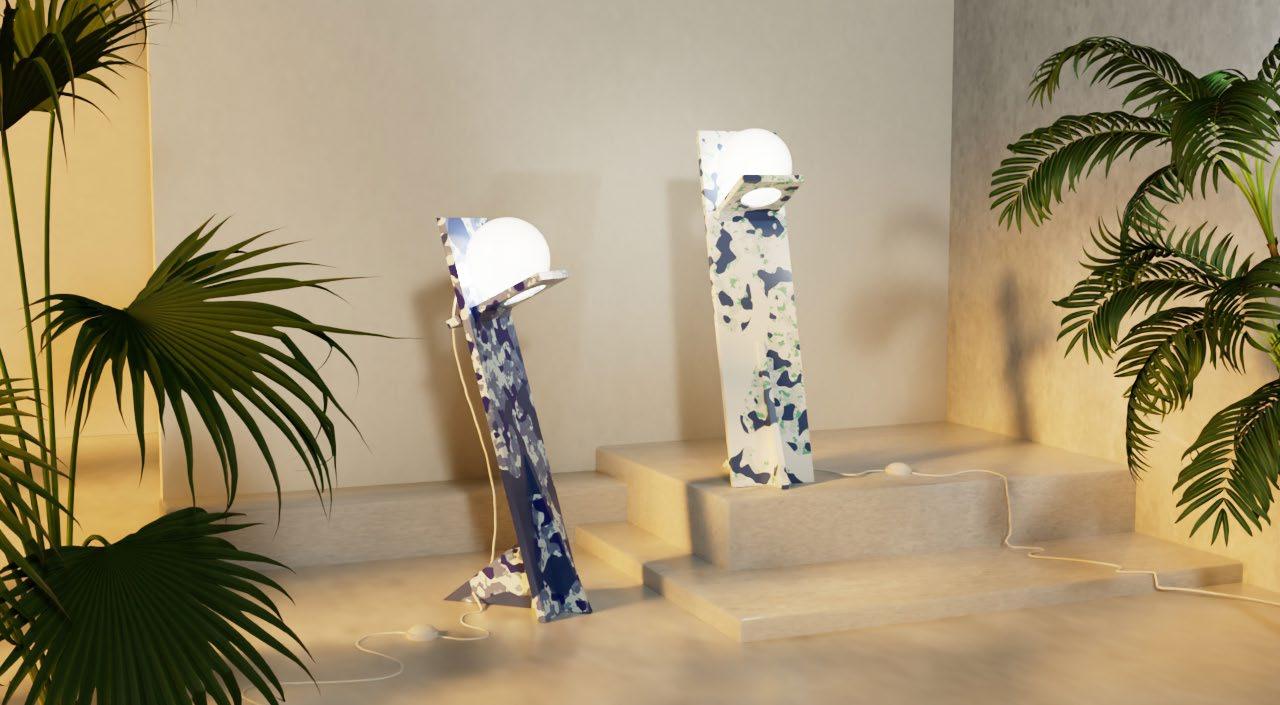
A 3Ds Max rendering of NOVO
Adaptive Flexibility Function
O. Jannings and A. Haudrum Applied Mathematics, Technical University of Denmark
INTRODUCTION
Reliable access to energy is essential today, as is taking care of our earth’s resources. Transitioning to a sustainable future requires smarter and more reliable consumption, the ability to manage energy consumption will be of great importance. This project focuses on predicting energy demand in residential buildings, by modelling different types of energy usage, including uncontrollable variables such as price responsiveness or preferred temperatures. This could lead to shifting energy demands and reducing the cost of energy or CO2 emissions
METHODOLODY
Through simulated data from residential heat pump systems, the parameters for predicting demand are estimated. The model is then able to approximate the energy demand using stochastic differential equations, which captures how consumption depends on electricity prices or thermal properties of the buildings. Differences in occupant behavior is also considered.
RESULTS
The model accurately predicts energy demand for a building, using baseline demand and price inputs. The differences in the thermal properties of the buildings were also captured by the model. As well were the effects of occupant behavior.
CONCLUSION
The model is able to predict the energy demand in residential buildings, making it possible to reduce price of energy and CO2 emissions. This is possible for both older and newer buildings. The model also captures behavioral differences among residents. Furthermore, the priceresponsiveness and the amount of uncontrollable demand became clearer.
GreenWashing – a way to get rid of your used cooking oil
G. Greenwashing, V. Nguyen, L. Rasmussen, S. Damgaard and A. Sønderholm Process & Innovation, Technical University of Denmark
INTRODUCTION
UCO (Used Cooking Oil) is a highly overlooked waste stream in private households. It poses a major environmental risk when disposed of incorrectly. In Denmark alone, each household generates approximately 5,25 kg of UCO per year, amounting to an estimated 15,000 tons annually across 2.86 million households. Alarmingly, about 19 percnet of Danish households admit to disposing of used oil by pouring it down the drain, including members of our own team! We address this problem by offering a solution that gives your otherwise liquid trash a new purpose.
METHODOLODY
We stumbled upon our problem among members of our design team and confirmed our hypothesis through interviews and surveys. During pretotyping of our solution, we sparred with a local water treatment plant to ensure that it wouldn’t cause further environmental problems. After consulting with retail outlets such as supermarkets, we were able to confirm there would be an economic gain for both stakeholders, consumers and the design team.
RESULTS
Our solution is a Do-It-Yourself kit that allows you to transform UCO into usable dishwashing soap. By collecting your UCO in our container and adding our mixture to it. A gentle shake will create a finished product of dishwashing soap. The ingredients in our soap-mixture are h arvested mainly from sustainable local agricultural industries and consist of no harmful chemicals. We envision saving the end-user expensive plumbing bills from clogged drains, not creating a new problem for water treatment plants and saving the environment drop by drop
CONCLUSION
GreenWashing’s impact improves household sustainability by preventing improper oil disposal and promoting SDG Goal 12: responsible consumption and production. The integration of dishwashing soap from UCO represents our step towards turning waste into something beneficial and encouraging mindful behavior regarding overlooked resources. The project is scalable, environmentally beneficial, socially impactful, and demonstrates a solution to a long-standing environmental challenge.
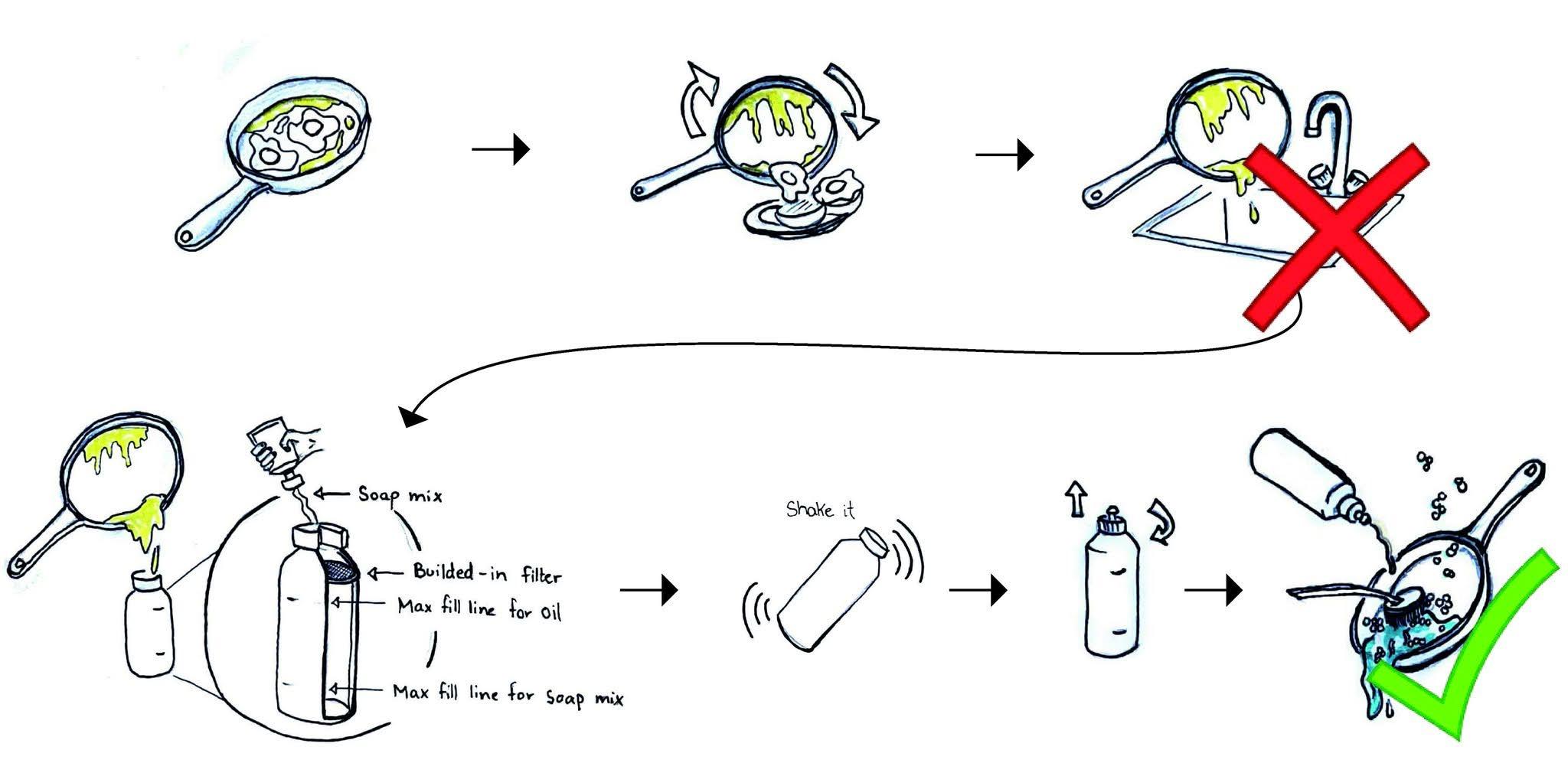
Green Wrap
I. Rafique and L. Sheikh Process & Innovation, Technical University of Denmark
INTRODUCTION
With a focus on SDG 12: responsible consumption and production, our business idea is to replace traditional gift wrapping paper with a sustainable alternative – Green Wrap. We aim to utilize excess textiles for our gift wrapping and thereby create a fully reusable solution. The consumption of traditional gift wrapping paper is a problem, as Danes use approximately 800–825 tons per year. This is mainly because we tend to throw away gift paper, after just a single use.

METHODOLODY
By collaborating with various retail stores and thrift shops, we will receive excess fabrics. The aim is to upcycle the textiles, to create aesthetically pleasing designs, and thereby add renewed value to them. In the short term, the focus is solely on developing a textile-based wrap. In the long term, the final product will feature fabric coated with a blend of beewax, jojoba oil and resin. This coating enables an easy closing mechanism while also allowing for creative prints and designs which creates a personal connection with the consumer.
RESULTS
By repurposing excess textiles as an alternative to traditional gift wrapping, we aim to reduce resource waste and offer a truly sustainable solution. Our marketing strategy will highlight this eco-friendly approach, appealing to environmentally conscious consumers, who value sustainability. To broaden our reach, we will invest in marketing efforts focused on social media platforms, pop-up shops and workshops - key channels where our target audience is most active.
CONCLUSION
By developing a gift-wrapping alternative that is visually appealing, functionally comparable to conventional wrapping, and reasonably priced, we offer a sustainable solution. Our goal is to introduce a durable and eco-friendly option that can serve as a viable replacement for traditional gift wrapping among the general Danish public.
FireEnviroment - Cooking with the forces of nature
A. Jensen Process & Innovation, Technical University of Denmark
INTRODUCTION
In an uncertain world in 2025, citizens in several countries are encouraged to prepare for crisis situations. In the event of a shortage of refined fossil fuels or the outbreak of war, it will be up to the individual household to find alternative ways of preparing food. A serious scenario arises if stores in panic buyouts are emptied with gas, to which no new deliveries are made. This could be due to resource scarcity or supply chain failures. In such cases, it may become impossible for many to ensure a warm and nutritious meal.
METHODOLODY
FireEnviroment is a sustainable alternative to Trangia, created for crisis situations and used without refined fossil fuels. Made from recycled stainless steel and a discarded ammo case. Stainless steel can be recycled countless times, without loss of strength or formability, and requires up to 70 percent less energy. As fuel, FireEnviroment uses fallen twigs, a natural resource found in almost every environment. The concentrated burn area ensures minimal emission of particles. The solution supports the UN's Sustainable Development Goal 12.2By 2030, achieve the sustainable management and efficient use of natural resources.
RESULTS
FireEnviroment ensures households’ access to hot food, regardless of the crisis, access to refined fossil fuels or supply chain failures. A sustainable and long-lasting solution is created that enables households to be self-sufficient, using natural resources and recycled manufacturing materials. FireEnviroment is part of the future of preparedness and contributes to a greener, more resilient world.
CONCLUSION
When access to refined fossil fuels and supplies fails, FireEnviroment provides households with the opportunity for self-sufficient cooking, using recycled materials and nature's own resources. The solution is practical, robust and sustainable, contributing to a greener and more resilient future in interaction with the UN's Sustainable Development Goal 12.2 on sustainable use of natural resources.
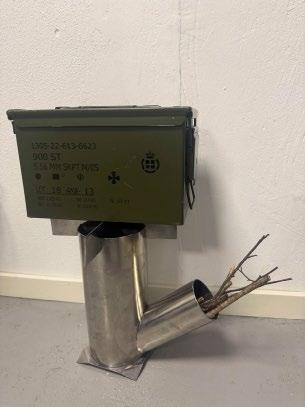
BlindGuide
F. Bidstrup, D. Nedergaard, M. Larsen and L. Ottesen Process & Innovation, Technical University of Denmark
INTRODUCTION
BlindGuide is a modular, portable tactile path system designed to help blind and visually impaired people navigate safely around temporary urban obstacles such as roadworks. The product promotes inclusion and independence in the public space and directly supports UN SDGs 9, 10, and 11. It is a concrete example of technology leaving no one behind through inclusive infrastructure design.
METHODOLODY
We applied a user-centered design process involving interviews with 20+ visually impaired individuals, workshops, and on-site testing. Insights guided the development of a lightweight, durable guiding path that is easy to deploy by municipalities or contractors, while instantly recognisable by users through tactile patterns familiar from permanent city infrastructure.
RESULTS
Tests showed that BlindGuide increases user safety and confidence. Participants could detect and follow the path using their cane, even in noisy or unfamiliar environments. Stakeholders highlighted the product’s low deployment barrier and high value for inclusive city planning. Feedback confirmed that the solution bridges a major accessibility gap in temporary spaces.
CONCLUSION
BlindGuide is an intuitive and easy-to-install guiding solution co-developed with users, municipalities, and construction firms. It offers tactile navigation support during temporary changes, enhancing safety and autonomy. By combining practical infrastructure with user insight, the system empowers mobility for those often excluded from public planning. BlindGuide is a step toward smarter, safer urban spaces—built on the principle of technology leaving no one behind.

Waste Sorting
W. Hald Lundby, A. Bianco Tolstrup, L. Audi and K. Kwaku Frimpong Process & Innovation, Technical University of Denmark
INTRODUCTION
Waste management starts from our homes, our habits and our behaviors. To reduce the amount of residual waste, we have gone straight to the source. We have built an effective sorting system, specifically made for smaller spaces, to promote waste sorting in primarily rental housing. Our goal is to create a modern solution for waste reduction and correct waste sorting inspired by World Goal 11 and 12, and specifically 11.6.1, which is the proportion of municipal solid waste collected and managed in controlled facilities out of total municipal waste generated, by citiesand 12.5 where we, by 2030, are to substantially reduce waste generation through prevention, reduction, recycling and reuse (United Nations. (n.d.).)
METHODOLODY
Our methodology combines user-centered design with iterative product development. We engaged potential users in small Copenhagen apartments to identify their challenges with waste sorting. Based on these insights, we designed modular sorting bags tailored for limited space. Prototypes were tested for usability and feedback, guiding further refinement and potential scalability.
RESULTS
Our solution led to increased user satisfaction and sorting efficiency in small apartments. Users found the modular bags intuitive, space-saving, and easy to carry. Initial tests showed improved sorting accuracy and higher motivation to separate waste correctly. These results suggest strong potential for adoption among Copenhagen housing associations.
CONCLUSION
Sustainability begins at home - and with our modular sorting bags, it becomes simple, intuitive, and achievable, even in the smallest Copenhagen apartments. By transforming waste sorting into a seamless part of daily life, we help residents be a part of the recycling solution. Through partnerships with housing associations, we are building greener communities, one apartment at a time.

Prototype of modular waste sorting bags
OceanSave
M. Weile, R. Bolmers and M. Devic Global Business Engineering, Technical University of Denmark
INTRODUCTION
When a person falls overboard, time is critical. These incidents often lead to fatalities due to hypothermia and delayed response. Current rescue operations rely heavily on manual detection and coordination, which can be slow and imprecise. Our project aims to minimize the response time by introducing an autonomous drone system designed to rapidly locate individuals who fall overboard, thereby improving survival rates and overall rescue efficiency.

METHODOLODY
We have talked to fishermen who work in dangerous conditions at sea to understand their challenges, as well as reached out to ferry operators to explore if our solution can be implemented on their vessels. We researched existing search and rescue solutions and investigated how we can contribute with a new innovative approach to help people lost at sea. To demonstrate feasibility, we built a prototype drone capable of carrying a payload and dropping a life-saving jacket.
RESULTS
We expect the drone to autonomously detect heat anomalies at 100– 300 meters, depending on weather and sea conditions. The AI improves detection accuracy by filtering out false positives caused by waves, reflections, or sunlight. The drone can operate within a 30-35 min. time range and is capable of functioning in moderate wind and rain conditions, making it suitable for use on fishing vessels and other maritime operations.
CONCLUSION
This autonomous drone system enhances maritime safety by enabling faster, more precise detection of people overboard - even in poor visibility. Compared to traditional methods, it reduces response time and improves chances of survival. The system leverages existing drone technologies but distinguishes itself by offering full autonomy, advanced environmental sensing, and integration with emergency systems, making it a scalable and innovative solution for the maritime sector.
Visualisation of an autonomous drone system
Star-Sweeper
A. Falck
Global Business Engineering, Technical University of Denmark
INTRODUCTION
The Earth's orbit is increasingly surrounded by vast amounts of space debris, which not only makes business endeavors in space more expensive but also significantly more risky. Approximately 54,000 objects over 10 cm pose an economic and physical risk, which can be minimized by reducing these space debris objects to atmospheric burn-up and destruction using mass-produced control drones.
METHODOLODY
Star-Sweeper is an AI-assisted EVA drone satellite for intercepting and reducing NEO space debris using nitrogen thrust and retro-propulsion capability. Launch and deployment are carried out by "piggybacking" on already planned satellite launches.
RESULTS
Initial testing and prototyping are underway. Results are forthcoming
CONCLUSION
According to the above, testing has not yet reached a point where conclusions can be drawn or ratified.
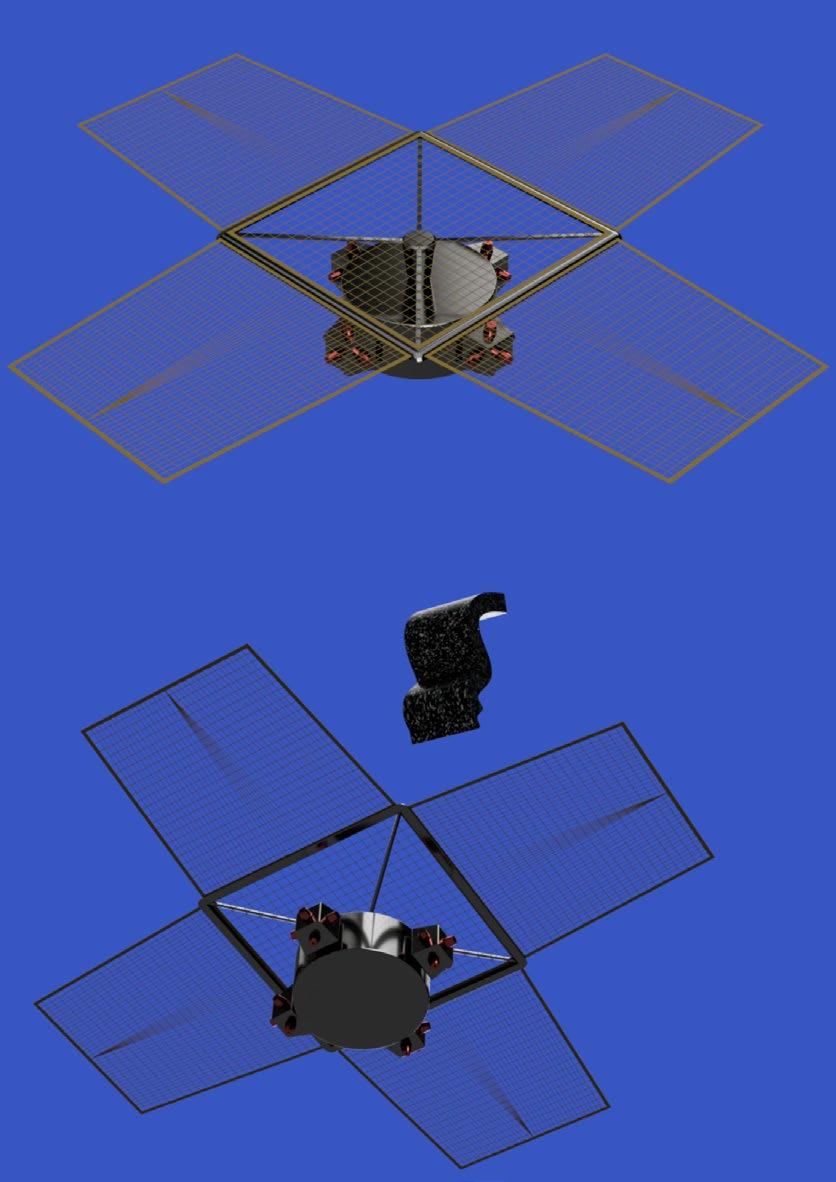
Star-Sweeper Prototype V2. (WIP)
Abstracts BACHELOR FINAL ASSIGNMENT
StormSponge: Superabsorbent Polymer Barriers for Flood Prevention
J. Sullivan, A. Koniszewski and M. Hultén Computer Engineering, University of Maryland
INTRODUCTION
Around 600,000 Danish homes are threatened by flooding. Climate change is increasing the problem with more frequent and severe weather events, including storm surges and heavy rainfall, as well as increasing seawater levels. The risk of flooding increased on average by 11 percent in Europe over the last 70 years. Flooding consequences are significant, with potential damages to homes, vacation homes, and commercial buildings estimated at DKK 7 billion per year, and could increase to DKK 27 billion a year by 2100 if no mitigating actions are taken.
METHODOLODY
We propose using biodegradable superabsorbent polymers (SAP), to absorb flood water and prevent damage to homes. These are integrated into a fabric designed to seal around door frames, offering vertical and horizontal protection. Early water absorption reduces damage and offers a low-cost, preventative solution compared to expensive flood recovery and insurance claims. Although sandbags exist, they do not provide vertical protection or remove water, as our product does, only forming a barrier that is heavy and difficult to move.
RESULTS
We found that about 0.125 g of SAP can absorb around 40 mL of water. These barriers are also reusable, as they lose all of the water within 6 days and can reabsorb all of their original capacity after a single reuse. To dispose of the product, the SAP can be used in soil to aid plant watering. The cloth fabric and biodegradable glue can also be composted. Our product has been successfully tested as a prototype for water absorption, but it has not yet been implemented for flood protection for buildings, as proposed in this project.
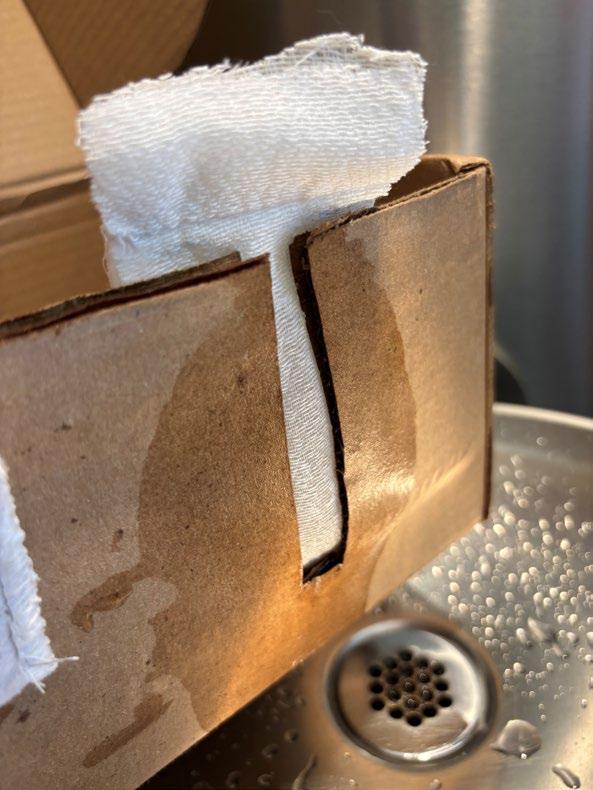
CONCLUSION
Our StormSponge, using superabsorbent polymers, have shown to be effective for absorbing water, and provides protection against flooding by adhering around door frames. It is an inexpensive and more user-friendly alternative to sandbags and plastic outdoor barriers as our product can be implemented within minutes. Moreover, we found our product is reusable compared to the sandbags which are only for one-time use. This solution aligns with SDG13 by helping communities adapt to the increasing risk of climate change and extreme weather events.
References
1. Godsen, D., Studley, M. & Rossiter, J. (2023). Material extrusion of sodium polyacrylate superabsorbent polymer. Additive Manufacturing. 78(1), 103886. https://doi.org/10.1016/j.addma.2023.103886
2.Vallgårda, A. F. (2024). “Almost a third of Denmark is threatened by water from the sky, sea and ground”. Fremtidens Arealanvendelse. https://concito.dk/en/news/almost-a-third-of-denmark-is-threatened-by-water-from-the-sky-sea-and-ground
Continuous Upgrading of Ppyrolysis Based Bio-oil
R. Knudsen and R. Pallisgaard Chemistry & Technology, Technical University of Denmark
INTRODUCTION
The global climate crisis remains a pressing issue. The transport sector account for around 60 percent due to the high reliance of fossil fuels. Aviation and heavy transport are unfit for electrification, thus other sustainable alternatives need to be developed. A fuel like liquid bio-oil can be made from pyrolysis of biomass. However, bio-oil has problematic properties making it unfit for the current state of the art refinery processes. A preceding upgrading step is therefore needed to utilize green bio-oil in fuel production.
METHODOLODY
A two-step upgrading process is needed: first, stabilization of the most reactive groups, followed by HDO. Various process conditions and Ni-based catalysts were screened in a pilot scale trickle bed reactor, to determine the optimal process conditions and sulfur resistance for a stabilization step. Model compounds mimicking real bio-oil were used to closely monitor the behavior of reactive constituents in bio-oil. GC analysis of liquid and gas samples was conducted to evaluate catalyst activity and selectivity.
RESULTS
Runaway behavior was observed at high operating temperature and with high feed concentration. The process was therefore optimized, with a diluted feed and lower operating temperature, ensuring stable steady-state operation. Conversion of problematic species were seen already at low temperatures, while some model compounds required higher operating temperatures for full conversion. The main reaction products from different catalysts were also identified, showing high selectivity towards desired products.
CONCLUSION
The findings highlight the potential of Ni-based catalysts in bio-oil stabilization, paving the way for sustainable fuel production from biomass. Operational parameters were determined ensuring

Plastics Uncovered
L. Wybrandt and J. Würtzen Mechanical Engineering, Technical University of Denmark
INTRODUCTION
Plastics Uncovered: Sorting the Future is a hands-on physics educational module for Danish upper secondary students (Physics A/B). It demonstrates practical recycling technologies using eddy currents and electric fields to sort mixed plastic and metal waste. The module links core physics principles to sustainability and waste-management issues. It aims to engage students with engineering and raise awareness of sustainability challenges.
METHODOLODY
The hands-on module features two demonstration setups: one uses rotating permanent magnets to induce eddy currents that separate non-ferrous metals from plastic, and the other applies a 40 kV electric field to sort particles by static charge attraction. The curriculum integrates simulations, practical exercises, and physics assignments aligned with the Danish Physics A syllabus. The design emphasizes modularity, simplicity, and adaptability.
RESULTS
Although not yet tested in classrooms, preliminary experiments show the setup produces a clear separation of metal particles (1–5 mm) from plastic using eddy currents and static attraction. The demonstrations vividly illustrate complex physics principles in a tangible way. Early feedback from physics teachers indicates the module aligns well with curriculum goals and has strong educational potential.
CONCLUSION
The module introduces students to practical green technology, connecting engineering to everyday sustainability challenges. It is adaptable, efficient, and designed to spark curiosity about recycling-related physics. By engaging students in real-world applications, the project helps nurture future talent for solving environmental challenges. It is an easy-to-integrate, future-oriented teaching tool for science classrooms.

A demonstration of the eddy-current separation principle
SSA in Unfired Clay Blocks
M. Holm and J. Allerup Civil Engineering, Technical University of Denmark
INTRODUCTION
This project explores unfired compressed earth blocks (CEBs) with sewage sludge ash (SSA) as a sustainable alternative to concrete. Clay-rich soil was mixed with varying SSA levels to study effects on compressive strength, shrinkage, and density. Results show SSA can improve some properties while promoting waste reuse. The study highlights the potential of combining earthen construction and industrial byproducts to develop low-carbon building materials.
METHODOLODY
Clay was dried at 50 °C for three days, ground, sieved (8 mm), and stored airtight. Sand was used as received; SSA was pre-dried. Materials were mixed in set ratios for OMC tests. Mixing included staged stirring with scraping to ensure even blending. Samples (~350 g) were compressed in a mold to 8 kN, then extruded and measured. Moisture content was determined on subsamples, and Proctor curves plotted. All material was sealed to prevent moisture loss.
RESULTS
This graph shows how compressed earth blocks (CEBs) with 5% sewage sludge ash and 11% water handle pressure until they break. The peak stress is around 3.5 MPa, showing good strength. The smooth, similar curves suggest the mix is even and reliable. This makes the material a strong candidate for use in sustainable, unfired building blocks.
CONCLUSION
After optimizing the sand, water, SSA, and clay ratios, and improving mixing and drying, a promising mix was found. The clay came from gravel washing, where fine particles are removed. Test samples from this mix reached an average compressive strength of 3.5 MPa, with shrinkage under 0.5% and a satisfactory Young’s modulus. This suggests the mix has both good mechanical performance and potential for sustainable use.

Stress–Strain Curve for CEBs with 5% Sewage Sludge Ash
Abstracts MASTER COURSE
301
Cereality
M. Waldmeier and C. Androitis
Food Technology, Technical University of Denmark and ETH Zurich
INTRODUCTION
86 percent of Danish children consume inadequate amounts of diateri fibers. According to the Nordic Nutrition Recommendations 2-3 g/ MJ of energy consumed by children from 2 years +, or more, should come of dietary fiber. Insufficient fiber intake was shown to be correlated to many chronic diseases (obesity, coronary heart disease, type 2 diabetes…) during later life stages. One in five Danish children is already overweight. Moreover, 56 percent of these children surpass the allowed sugar intake per day and 89 percent consume too much saturated fat.
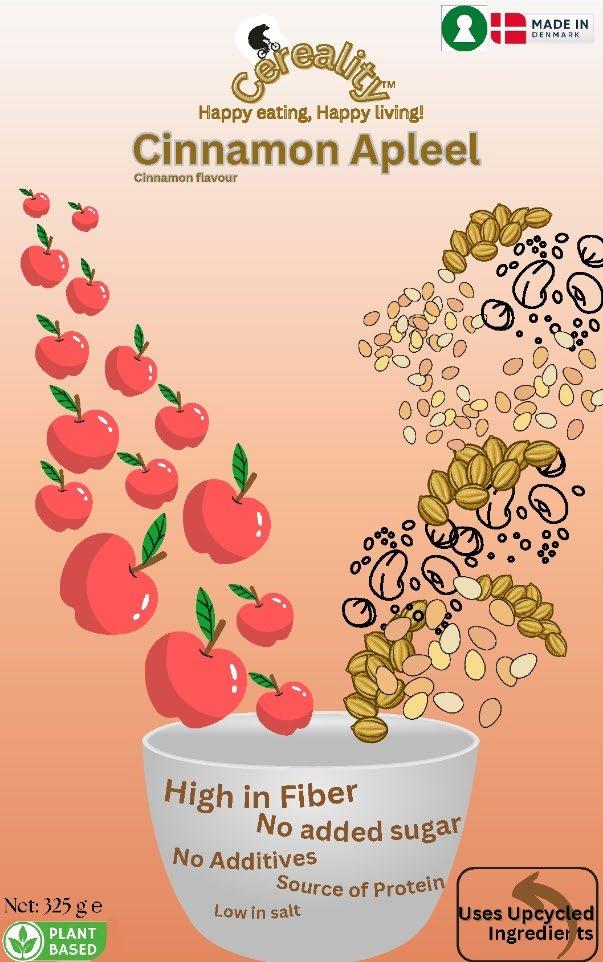
METHODOLODY
We conducted market research and delved into the literature to find out how to tackle this issue. 68 people were interviewed on why they were buying a certain type of breakfast cereal. We came up with our own formulation, that tackles all the above problems, by integrating apple pulp and brewers spent grains, food sidestreams, into our formulation. No added sugar, a high fibre content, no added fat as well as no additives are key characteristics of our solution. 2 Testings with children were conducted to continuously improve the recipe.
RESULTS
Roughly half of the 68 questioned people said that they often buy breakfast cereal based on claims on the packaging (low sugar, no additives, full grain, high in fibre...). When checking, most of these products still contained high amounts of sugar (>10g/ 100g), added salt or additives such as sweeteners. Furthermore, parents were actively looking for healthier, but still tasty. Also, the total market amounts to roughly 420,000 CONSUMERS (Danish children from 4-12 y, consumption 5-7 times). The market volume is 170 millionDDK, 0.5 percent growth/y.
CONCLUSION
Our cereals, Fibrant Choco and Cinnamnon Appleel, will be sold to parents (customer) and was produced for our consumers. Therefore, our marketing strategy aims to convince parents. This is mainly being done with health claims. Minor importance, but still significant is the claim that they are buying a Danish product. Also an upcycling logo will be visible on our packaging, but less highlihted. To make the cereal more appealing for children, the sweetness is enhanced with Monk Fruit extract and the cereals come in a bear shape (our mascot).
Prototype of packaging design for Cinnamon Appleel.
Aquanutrix – Omega-3 rich Insect Meal for Aquaculture
A. Van Oyen, S. Stroobants, S. Pierre and A. Vanderstraeten Tecnovation, Katholieke Universiteit Leuven (KU Leuven)
INTRODUCTION
- Aquaculture, the world’s fastest-growing food sector, heavily depends on fishmeal - a product derived from wild-caught fish - to feed carnivorous species. This practice contributes to depleting marine stocks and climate change. Aquanutrix offers a sustainable solution by replacing fishmeal with omega-3-rich insect meal made from black soldier fly larvae (BSFL). By upcycling organic waste, we aim to reduce pressure on marine ecosystems and cut emissions, creating a nutritional and scalable product.
METHODOLODY
- Our solution is based on bioconversion by BSFL reared on a substrate of organic waste and low-quality walnuts. All production steps (cultivating, harvesting, sterilizing and grinding into BSFL meal) are electrified. Our circular process also yields organic fertilizer made of insect manure and carbon-rich substrate leftovers. Upcycling an organic mix with low-quality walnuts from France alone (4,000 tons available) produces already 4,700 tons of BSF meal and 15,500 tons of fertilizer.
RESULTS
NUTRITIONAL, SUSTAINABLE AND SCALABLE - Lab tests confirm that BSFL fed on walnutenriched substrates exhibit elevated omega-3 levels, while maintaining protein quality comparable to fishmeal. Our solution shows promise in replacing up to 50 percent of fishmeal in fish feed without sacrificing fish growth. Environmental benefits include preserving marine biodiversity, upcycling agrifood waste and avoiding fossil fuel use, lowering CO2-emissions. The growing European walnut sector provides sufficient input to make our application scalable.
CONCLUSION
THE FUTURE OF AQUAFEED DOES NOT SWIM IN THE OCEAN, IT GROWS ON WASTE - Aquanutrix redefines aquafeed by turning food waste into high-value nutrition via innovative biological extraction of omega-3 out of low-quality walnuts (~ SDG 9). Our solution breaks marine dependence and harm (~SDG 14), avoids fossil fuel usage (~ SDG 7) and adds omega-3 to fish diets. It also aligns with the EU Green Deal (~ SDG 13) and circular economy by upcycling organic waste (~ SDG 12).

Electricity price indecator
Y. Alin Sustainable Energy Technologies, Technical University of Denmark
INTRODUCTION
This project aims to raise awareness of electricity costs and promote energy-efficient behavior. By using simple LED indicators to show current and upcoming electricity prices, users can make informed decisions about when to use high-energy appliances. It provides a quick, accessible visual cue to help shift energy usage to cheaper, greener hours.
METHODOLODY
A microcontroller (Arduino or ESP32) fetches hourly electricity prices daily and stores them locally and it syncs time. Six LEDs represent the current hour and next five hours, with colors indicating price levels: green (cheap), yellow (moderate), red (expensive). Thresholds are adjustable in the firmware. LEDs update hourly based on stored prices.
RESULTS
The device encourages flexible electricity usage by helping users shift consumption to cheaper hours. When used effectively, it can reduce electricity bills by up to 50 percent through smarter energy choices and optimized usage patterns.
CONCLUSION
This device offers a simple yet effective way to visualize electricity prices and encourage smarter energy use. By combining real-time data with intuitive LED indicators, users are empowered to shift consumption to cheaper hours. With adjustable settings and minimal power use, it supports both cost savings and sustainable habits, making it a practical tool for energy-aware living.
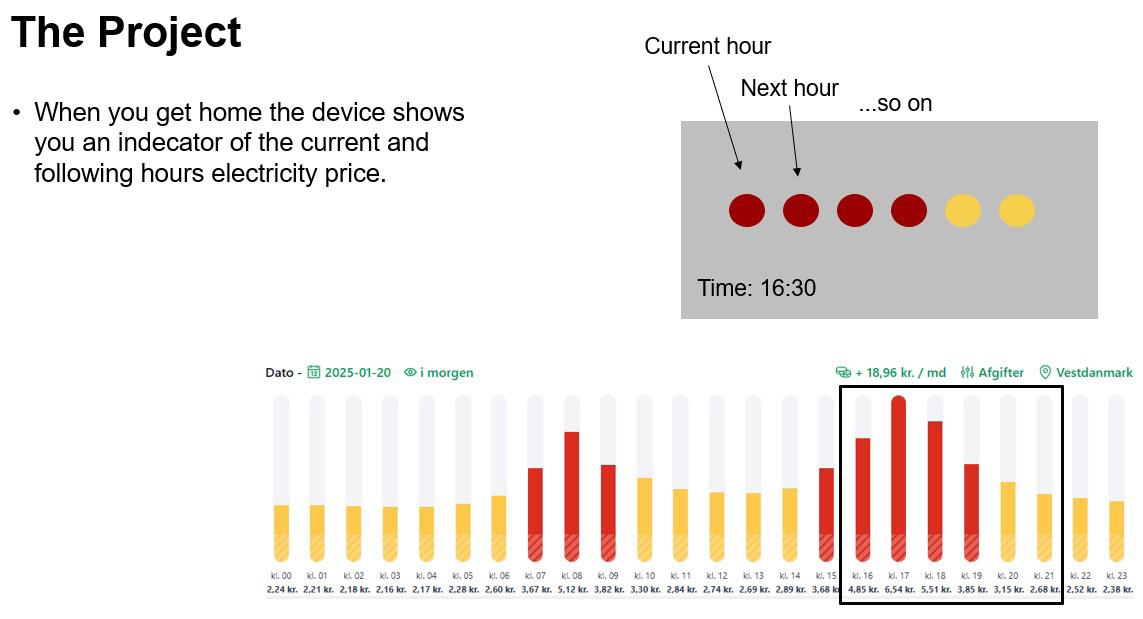
Rethinking Textile Waste with Synthetic Biology
J. Santiago Bajo, M. Salazar Anhuamán, E. Torres García, A. Calvo Susilla, R. Millum, D. Danilova, H. Servais Janssen Knudsen, K. Jakobsen, L. De Lamadrid Ordóñez and S. Xichu Bioinformatics, Technical University of Denmark
INTRODUCTION
Textile waste is a growing global crisis, with over 90 million tons generated annually. Nylon, a common synthetic fiber, breaks down into microplastics that pollute ecosystems and pose potential risks to human health. With traditional recycling methods falling short, we propose a synthetic biology approach to improve nylon degradation and help close the loop in fashion's plastic footprint.
METHODOLODY
We will engineer Pseudomonas putida to metabolize nylon monomers and oligomers by introducing nylonase genes (NylABC) through genetic engineering. To enhance degradation efficiency, we are developing thermostable NylC variants, as nylon typically requires high temperatures for enzymatic access. Additionally, while degradation is our main focus, we aim to redirect the resulting carbon into high-value compounds, contributing to the creation of a circular economy for synthetic fibers.
RESULTS
We expect to demonstrate that Pseudomonas putida expressing nylonases (NylA, NylB, NylC) can degrade nylon-derived compounds efficiently, particularly with thermostable NylC variants. Additionally, we aim to redirect the resulting carbon into the biosynthesis of carotenoids, serving as a proof of concept for metabolic routing and a high-value product. To streamline the process, we will employ protein engineering strategies to improve the thermostability of NylC.
CONCLUSION
This project will demonstrate a sustainable synthetic biology solution for nylon waste management by combining biodegradation with upcycling. By coupling nylon breakdown with carotenoid production, we aim to support the development of circular approaches in the textile industry.

Dry lab and wet lab pipelines in our project. Created with Biorender.
Yeast-Based Bioengineering for Sustainable Growth Factor Production in Cultivated Meat
A. Brambor and R. Pasadas Castilla Biotechnology, Technical University of Denmark
INTRODUCTION
World population will reach 9.8 billion in 25 years, requiring a 70 percent increase in food production. Current methods cannot meet this demand sustainably due to greenhouse emissions, land use, water consumption, and animal welfare. Cultivated meat (CM) could reduce greenhouse gas emissions by 96 % and water use by 82 percent, but high costs and limited media ingredients make scaling difficult and could increase environmental impact. Media makes up over half of operation costs, mostly due to expensive growth factors (GFs) and recombinant proteins.
METHODOLODY
Growth factors are considered one of the most limiting factors for CM production in terms of cost and availability. To put it into perspective, in 2020, the global production capacity of transferrin, one of the main GFs, was only 1 percnet of what would be needed to produce 0.14 percent of the annual beef production. To achieve a sustainable scale up, recombinant production strategies must be improved. Several attempts have proven challenging in prokaryotic hosts due to post-translational modifications requirements.
RESULTS
Our project aims to optimize the expression of the main GFs used in CM media, such as FGF-2 and transferrin, through synthetic biology tools. We utilize a food-grade yeast to enable safe and scalable production suitable for food applications. We first engineered yeast to secrete GFs into the medium, then optimized strains for improved protein expression and secretion. This approach improves overall protein yield and reduces downstream processing steps, thereby significantly lowering the production costs of GFs like FGF-2.
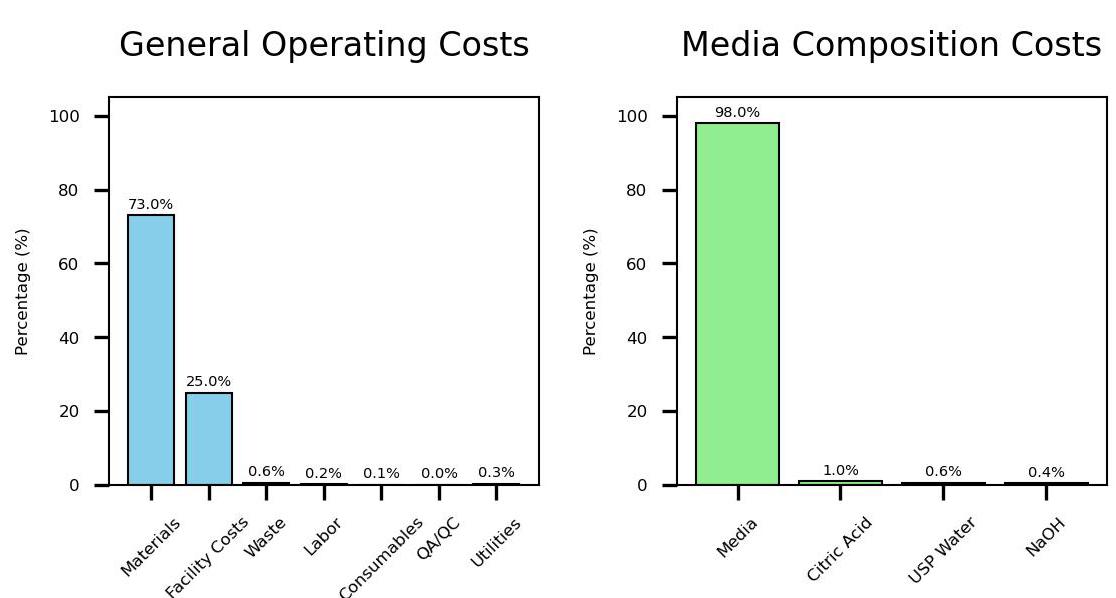
CONCLUSION
This project contributes to SDG 12 by promoting sustainable, scalable alternatives to conventional meat. Using synthetic biology, we enhance the expression and stability of key GFs through addressing a major bottleneck in CM production: the high cost and low yield of recombinant proteins. Our approach could cut media costs, making CM more affordable and sustainable. It also offers consistent protein availability, supporting global nutrition, climate goals, and reduced animal agriculture.
Geckowatt Balcony Solar Plant
M. Siitam
Autonomous Systems, Technical University of Denmark
INTRODUCTION
Balcony solar plants (BSPs) are small PV systems that are typically mounted on balconies. Germany has been the early adopter in this development, but many other EU countries have now implemented regulations that permit self-installation of BSPs. Everyone is now able to participate in the energy transition. Theoretically. We observed lots of frustration when it comes to finding the right hardware and putting everything together. BSPs are more complicated than they need to be – although the market is ready for a true plug-and-play solution.
METHODOLODY
GeckoWatt is the first-ever fully integrated BSP. It features solar cells, an inverter, a battery, and a retractable mounting – all in one device. We aim for a set-up time of less than 2 minutes. After that, the BSP is connected to a usual power plug and will then start to produce home-made, green electricity. We want to become an enabler in the mega trend of decentralised micro PV plants. And this means removing the hurdles as much as possible by making BSPs smart and easy to use.
RESULTS
In the first step of our hardware development journey, we have developed a prototype for our integrated inverter unit that is able to transform DC (from cells) to AC (grid input) with the help of a switching matrix. Simultaneously, we are working on our easy-to-deploy, integrated mounting mechanism. The next steps involve battery integration and optimising the system from design, functionality, and ease-of-use standpoints.
CONCLUSION
GeckoWatt addresses the main pain points of conventional BSPs by combining all essential components into a single, compact unit. By simplifying access to solar power, we are empowering more individuals to contribute to the energy transition - directly from their own balconies. GeckoWatt stands as a key enabler in the growing movement toward decentralised, sustainable energy production.

GeckoWatt’s all-in-one, plug-and-play balcony solar plant
Co-Founder
D. Nabeiro, A. Maftei, S. Sindrason, F. Theilacker, P. Heen and N. Crisostomo Technology Entrepreneurship, Technical University of Denmark
INTRODUCTION
CETO Innovation revolutionizes district heating maintenance with AI-powered predictive analytics and non-invasive in-tube probes. Our solution detects corrosion, leaks, and structural issues in aging pipelines without excavation, reducing costs by 30 percent, minimizing downtime, and lowering CO2 emissions. Targeting 400 district heating companies, our scalable Product-as-aService model ensures recurring revenue. With a validated prototype and LOI from FORS, CETO drives sustainable, data-driven infrastructure management.
METHODOLODY
CETO’s methodology integrates autonomous in-pipe robotics with AI-driven analytics. In-tube probes collect high-resolution data on pipeline conditions, navigating without service disruption. Machine learning processes this data to predict corrosion, leaks, and degradation, generating actionable maintenance insights. Prototypes are refined through iterative testing: initial data collection, wet environment trials, and field-like validation over 12 months. Collaborations with X-Tech students and utility partners ensure scalability and real-world applicability
RESULTS
Current maintenance schedule and suggestions for improvement
CETO’s prototype achieved successful data collection in controlled tests, identifying corrosion with 90% accuracy. LOI from FORS validates market demand. Second-generation prototype improved sensor precision by 20 perecent. Soft funding from Microlegat and Otto Bruuns supports R&D. X-Tech’s Best Tech Demo award highlights innovation. Ongoing collaborations with X-Tech students enhance software and hardware. Predictive analytics reduced simulated maintenance costs by 25 percent, paving the way for field trials.
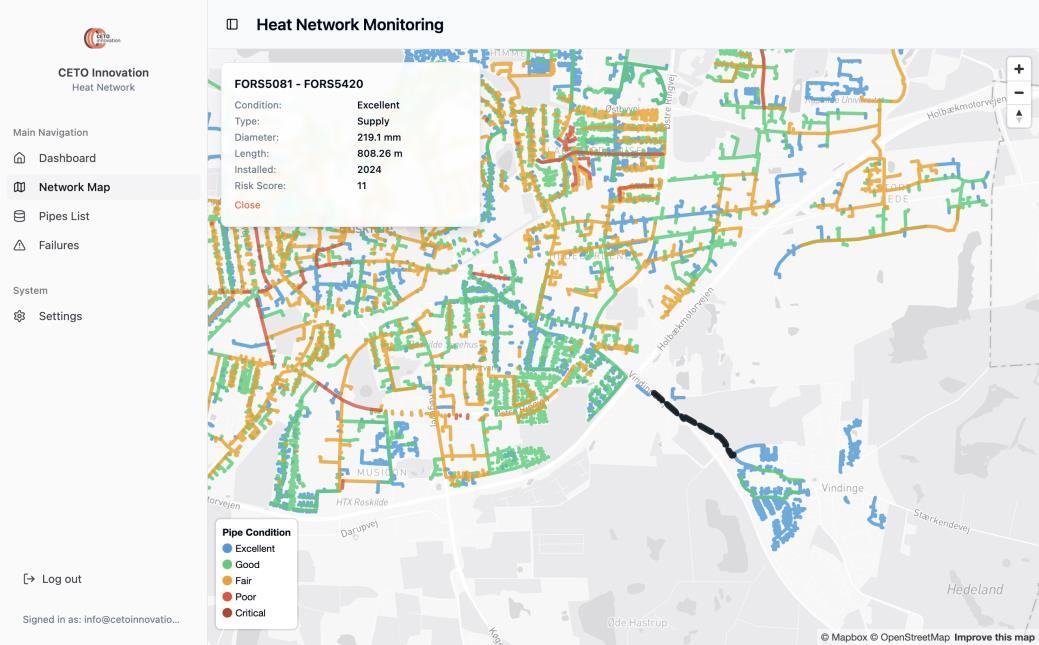
Map with all the pipes in the network. Color-coded by pipe condition and with pipe details.
Map with all the pipes in the network (Colour-coded by pipe condition and with pipe details)
CONCLUSION
CETO Innovation’s AI-powered predictive maintenance platform transforms district heating by enabling proactive, non-invasive pipeline management. With validated prototypes, strong market traction, and a scalable PaaS model, CETO reduces costs, prevents failures, and enhances sustainability. Next steps include field testing and securing additional LOIs, positioning CETO to lead in modernizing aging infrastructure across Europe’s district heating sector, ensuring safer, smarter, and greener energy distribution.
HelioHome - The Home Optimization Platform
D. Salinas
Sustainable Energy Systems, Technical University of Denmark
INTRODUCTION
This project builds upon a DTU special course supporting the development of HelioHome, an online platform that simplifies residential energy upgrades. HelioHome guides homeowners through complex retrofit decisions by providing clear, personalized action plans aligned with their priorities - such as lowering utility bills, improving indoor comfort, or enhancing air quality. By breaking upgrades into manageable steps, the platform helps homeowners gradually achieve more sustainable, efficient, and healthier homes.
METHODOLODY
For this project, the retrofit planning process was tested manually, mirroring the workflow HelioHome intends to automate. Homeowner pilot users completed a simplified survey to provide data on home characteristics, occupant behaviors, and utility usage. This data was then used to create calibrated energy models reflecting actual household conditions. These models formed the basis of parametric optimization analyses, evaluating practical upgrade paths tailored to homeowner priorities and realistic budgets.
RESULTS
The study highlighted the balance needed between detailed data collection for accurate energy modeling and simplified input requirements for user accessibility. Model calibration accounted for occupant behaviors and common input errors, ensuring realistic baseline energy use. Multiple upgrade pathways - including full electrification and net-zero scenarios - were evaluated, but the final recommendations were carefully filtered to align with homeowner priorities, budgets, and readiness for incremental investments.
CONCLUSION
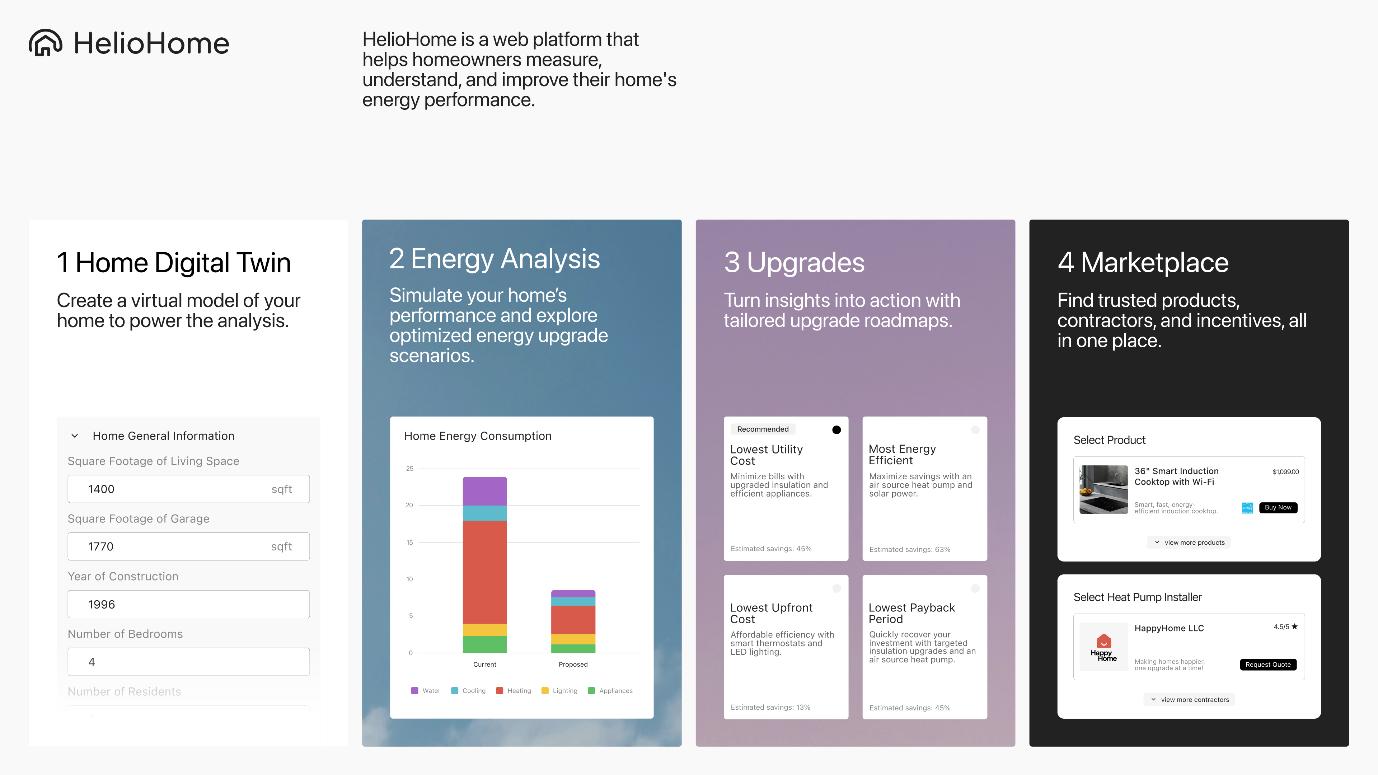
HelioHome demonstrates that residential sustainability goals are more achievable through personalized, incremental actions rather than complex, one-time interventions. Effective homeowner guidance relies on clearly communicated benefits, realistic pathways, and phased implementation. Future development will incorporate ongoing homeowner feedback to refine the platform, improving accessibility and accelerating home energy upgrades at scale.
HelioHome: Plan energy upgrades with a digital twin, analysis, custom roadmaps, and marketplace.
HappyLight, a sustainable solution for festival light
P. Heen, A. Madsen, A. Banck, D. Lindgreen, M. Husher, S. Jelstrup and S. Sylvest Design & Innovation, Technical University of Denmark
INTRODUCTION
Large festivals face lighting challenges in off-grid camping areas, impacting safety, navigation, and inclusivity. Our project addresses this by developing a low-glare, durable lighting solution, produced from reused drainage pipes, HappyLight. It aims to improve the festival experience for all attendees while minimizing light pollution and installation effort.

METHODOLODY
We conducted surveys, stakeholder interviews, and field observations to define user needs and system constraints. Through iterative prototyping and testing, we evaluated durability, visibility, and user behavior. Stakeholders included festival suppliers and organizers, ensuring the solution’s practical viability.
RESULTS
The final design is a low-cost, modular pole using recycled materials. It features a color-indicating RGB top for navigation and a warm downward light. Field tests showed improved campsite orientation and positive user response to the light’s comfort and visual identity. The RGB color is different depending on the location, helping guests better find their way.
CONCLUSION
HappyLight addresses wayfinding and safety challenges at festivals using sustainable, off-grid lighting. Its design supports inclusive navigation, reduced light pollution, and scalable deployment. The project bridges user-centered design with real-world infrastructure needs for safer temporary environments.
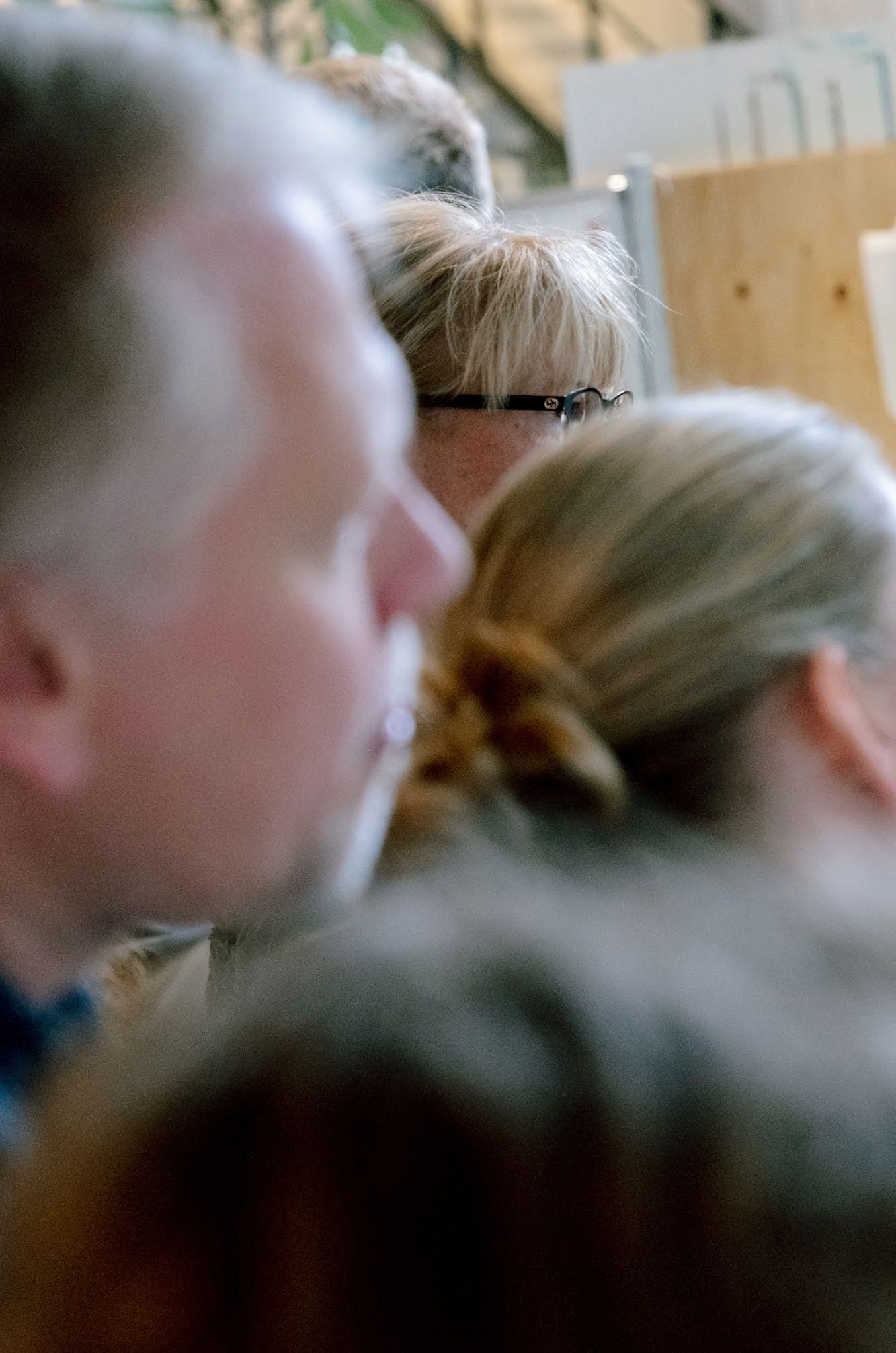
Happylight demonstration.


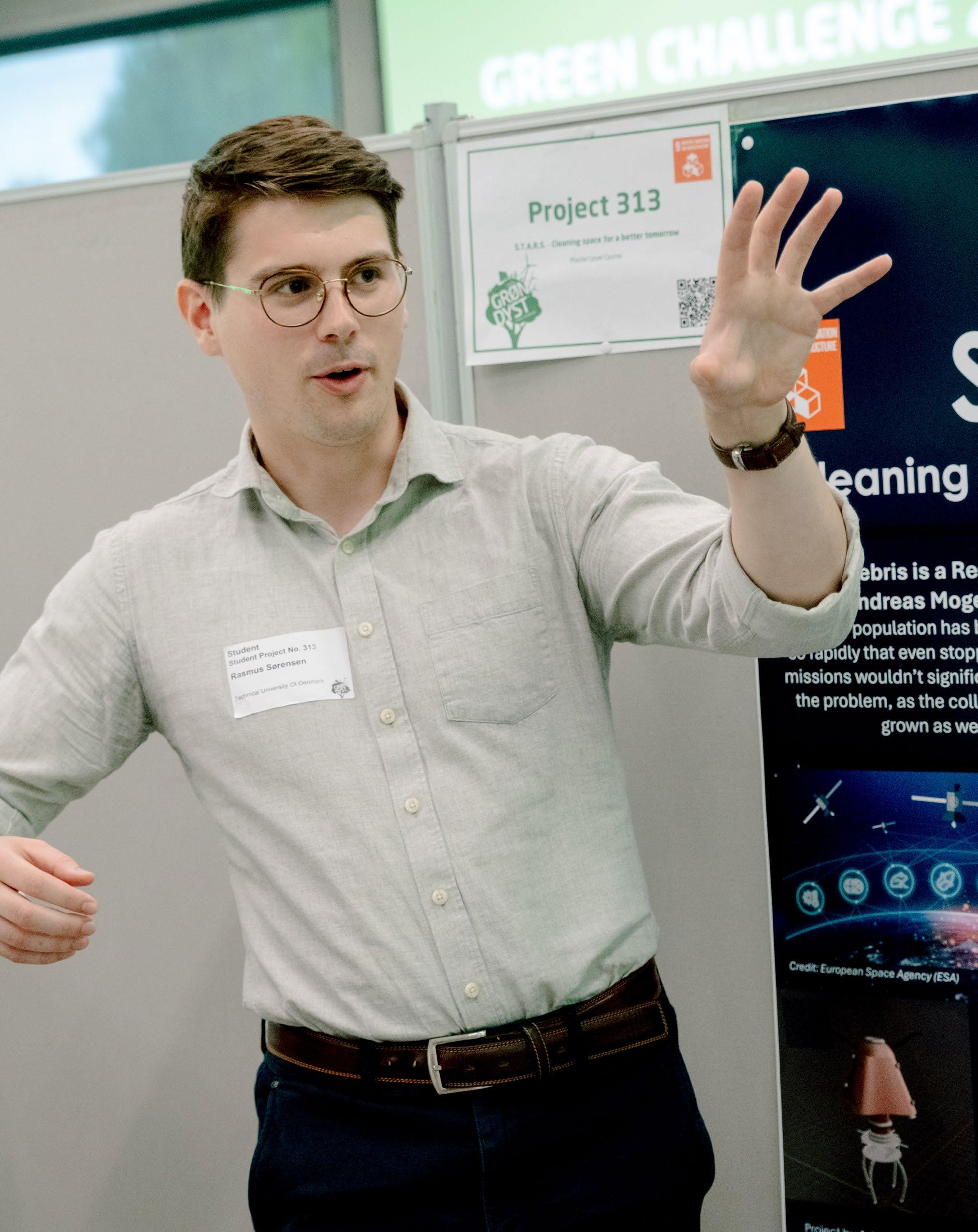
Abstracts MASTER’S THESIS
Road to Structural Reuse: Repurposing hollow core slabs in a modular wall system
L. Dennin
Architectural Engineering, Technical University of Denmark
INTRODUCTION
Concrete hollow core slabs (HCS) are probably among the most used building components since the industrialization of construction in the early 1960s. The scale and potential of their structural reuse are significant in terms of waste and CO2 reduction. With the legal requirements for the gradual reduction of CO2 footprints of future Danish buildings, architects and engineers will face an ongoing challenge in finding effective ways to comply.
METHODOLODY
This study explored the technical feasibility of repurposing reclaimed concrete hollow core slabs as vertical load-bearing elements, expanding their reuse potential in new construction. Prefabricated elements are ideal for structural reuse because of their standardized nature with respect to material properties and geometry. While reusing walls in new buildings is challenging due to their limited and often insufficient height, hollow core slabs offer greater flexibility, as they can be cut to any size smaller than their original span length.
RESULTS
An experimental proof of concept was conducted on reclaimed hollow core slabs from a deconstructed industrial building in Aarhus. The slabs were longitudinally cut and subjected to axial loading in a compression machine at DTU’s structural lab at three different eccentricities (0, 20, and 55 mm) to assess failure mechanisms. In addition, extensive non-destructive and destructive material testing was carried out to verify the material information from the building archive.
CONCLUSION
Laboratory tests have proven the technical feasibility of reusing hollow core slabs as compression elements. The study emphasizes the importance of uniform load distribution, adequate lateral restraint, as well as considerations for fire safety and sound insulation in future applications. As a result, a modular structural system, ReHoCS, was proposed to integrate reclaimed hollow core slabs as both walls and slabs in building designs, ensuring future adaptability and design for disassembly.
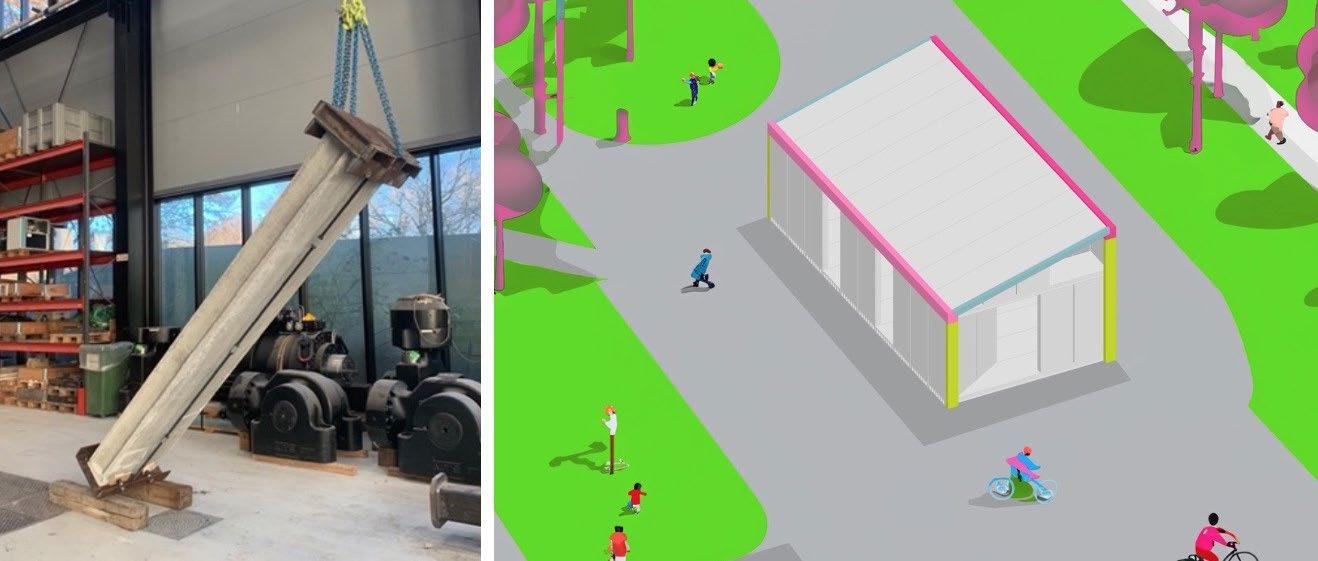
Sustainable Pathways for Reducing Electronic Waste: Ecodesign, Design for Repair, and Repair Strategies for Extended Product Lifecycles
S. Christaller
Industrial Engineering and Management Honours Program, Technical University of Denmark
INTRODUCTION
The rapid increase in Waste Electrical and Electronic Equipment (WEEE) presents significant environmental and economic challenges. With the aim of reducing the amount of Electrical and Electronic Equipment (EEE) to be disposed of or recycled, this project explores strategies to reduce electronic waste by analyzing repair-friendly product design, spare part management methods, and efficient repair processes. In addition, an electronic repair project together with the municipality of Copenhagen and the recycling stations is implemented.
METHODOLODY
The research is guided by the main question: How can product design and repair strategies contribute to reducing electronic waste and extending product lifecycles? Complementing theoretical research, practical research is conducted on broken electronic products which are handed in by citizens of Copenhagen and repaired in a new electronic repair project which is implemented together with the recycling stations to avoid electronic waste. The repair project was initiated by the author as part of the thesis and has been running since February 2025.
RESULTS
The study shows, that a majority of broken electronics can be repaired with no or marginal sparepart invest. Also for potential commercial product repair businesses, there would be potential if some product groups where repair is not economically viable are excluded. The electronic repair project is developed very successful with volunteers involved and 50-100 kg of electronic waste avoided per repair session. More than 300 datasets of electronic products are evaluated regarding failures and repairability.
CONCLUSION
The findings of this research inform policymakers, manufacturers and industry stakeholders on effective strategies for extending product lifecycles and developing circular economy solutions that balance environmental benefits with economic viabiliy. The research has shown that the majority of broken electronics is comparable easy to fix while the share of costly repairs is small. This can motivate to repair. It has also contributed to making the city of Copenhagen more sustainable and avoided multiple hundred kilograms of electronic waste.

Reprinted School - Additive Manufactured Design for Post-disaster Reconstruction in Nepal
J. Kahlenberg Caso, Architecture & Urban Design, Chalmer University of Technology
INTRODUCTION
The 2015 Gorkha earthquake in Nepal exposed the urgent need for resilient educational infrastructure in disaster-prone regions. This project explores how additive manufacturing combined with local earth materials can offer rapid, sustainable, and culturally adapted solutions for school reconstruction. The goal was to design a modular, earthquake-resistant school prototype that integrates traditional construction methods with innovative technologies, empowering local communities to actively participate in rebuilding efforts.

METHODOLODY
A Research through Design approach was employed, informed by a ten-week field study in Nepal, including site analysis, stakeholder interviews, and material testing. Structural geometries were optimized for seismic resilience based on the findings gathered on site. An experimental, parametric design process was used to adapt and refine the models. A small-scale clay 3D printer enabled iterative prototyping, shaping both the printing process and the final design.
RESULTS
The resulting design combines vernacular architectural principles with 3D-printed, earth-based construction. The experimental models demonstrated significant potential for rapid fabrication, seismic resilience, and reduced environmental impact. The modular school design allows for scalability and adaptability to different sites and community needs.
CONCLUSION
This project highlights how the integration of local resources with advanced manufacturing technologies can accelerate post-disaster recovery, foster community resilience, and promote sustainable development. By linking traditional knowledge with technological innovation, the "Reprinted School" concept presents a replicable model for humanitarian architecture in earthquake-prone regions.
Figure 1. 3D-Printed Modular School Model
Nature based solutions for human well-being within the urban fabric
L. Mónus
Sustainable Urban Planning & Design, KTH Royal Institute of Technology
INTRODUCTION
The project focus revolves around Nature-Based Solutions (NBS) that have been directed at improving climate mitigation and adaptation, however, the synergy with human health and wellbeing is less researched. Greenery has been shown to improve noise levels, air quality and reduce stress. Implementing such solutions is crucial in denser urban fabrics where green spaces are seen as unproductive land therefore the project aims to analyze current planning tools planning for well-being with NbS and identify necessary enhancements for implementation.
METHODOLODY
GIS analysis, of a development project using GYF, is conducted with the "3-30-300 rule" which are threshold values for assessing the sufficient integration of nature in the urban fabric for human well-being. It stands for at least 3 well-established trees in the field of vision from each home, school, and workplace, at least 30 percent crown coverage in each district, and a maximum of 300 meters to the nearest green area from each residence. After the analysis, the shortcomings and benefits of the planning tools and improvements are identified.
RESULTS
The RESULTS have revealed that the current planning tools serve the functions of aiding the works of developers, allowing municipalities to enforce requirements and promoting the benefits as well as implementation through simplified frameworks. The GIS analysis also revealed that the GYF tools outcomes do not match the new 3-30-300 rules aims therefore showing shortcomings of its planned NbS for well-being. Research has also revealed that adequacy of the resulting green spaces for the inhabitants is not a factor that is thoroughly considered.
CONCLUSION
The GIS analysis showed that the GYF, a current planning tool for ES, is not aligning with the rules criteria and can be improved using its principles. A more localized and adaptable framework to case specific issues is needed to be integrated and aligned with the above frameworks. Resultantly, there is a need to integrate environmental psychology, through tools such as the QET and Triangle of Supportive Environment, to better understand, plan and design for adequate cultural ecosystem services.
Enhancing Climate Resilience of Power Line Infrastructure
S. Schuler
Cold Climate Engineering and Civil Engineering, NTNU (Norwegian University of Science and Techology) and Technical University of Denmark
INTRODUCTION
Greenland has vast hydropower potential, but building and maintaining energy infrastructure in Arctic permafrost regions poses major climate resilience challenges. Near Sisimiut, tilting and settlement of power line masts threaten the stability of critical infrastructure, despite earlier repair efforts. This project investigates factors driving mast failure to develop robust, longlasting solutions. By improving infrastructure resilience, the project supports climate adaptation and advances SDG 7: Affordable and Clean Energy.
METHODOLODY
Fieldwork in September 2024 provided geotechnical data, complemented by lab analysis of soil samples. This data was used to calibrate a coupled thermo-hydrological-mechanical (THM) model simulating key processes affecting mast stability. Different soil, climate, and foundation scenarios were tested to identify critical failure mechanisms and optimize designs. RESULTS were evaluated through a feasibility analysis, including practical limitations.
RESULTS
The analysis shows that mast instability is most likely caused by a combination of soil type, thermal regime, and groundwater flow. To improve stability, the study recommends a foundation design with thermosyphons and piles, which would help control ground temperatures and increase load-bearing capacity. Additionally, switching the mast material from steel to wood could further improve performance by reducing heat transfer into the permafrost.
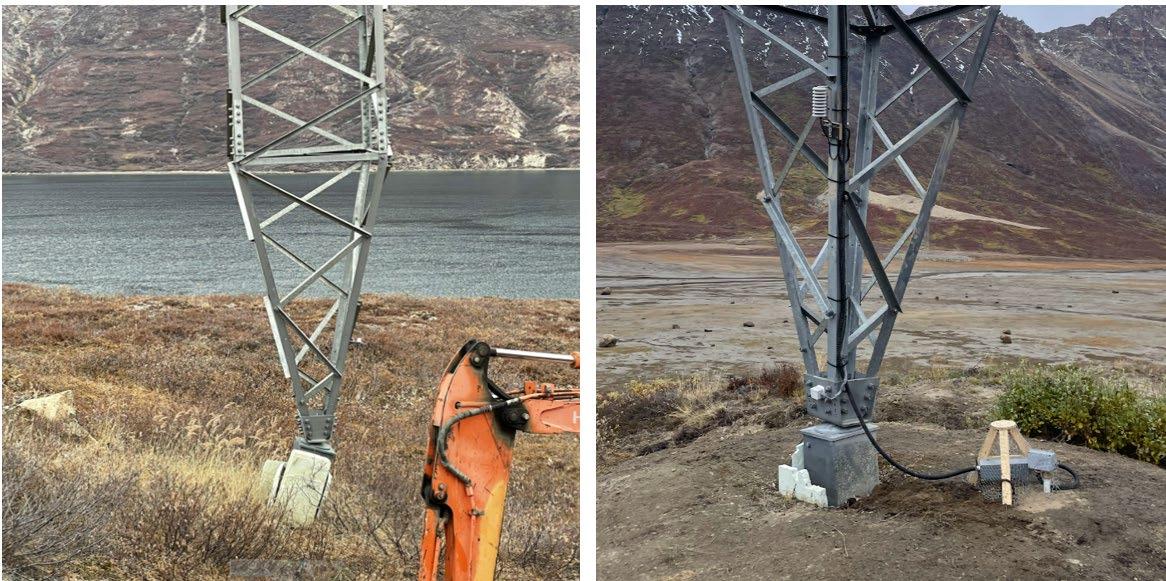
CONCLUSION
This study highlights how soil conditions, thermal regime, and groundwater flow together drive powerline mast instability in Arctic permafrost. Implementing thermosyphons, pile foundations, and alternative materials like wood can improve infrastructure resilience. These measures not only help stabilize local energy systems but also contribute to broader climate resilience goals and support the UN Sustainable Development Goal of affordable and clean energy.
Left: Heavily inclined mast in 2021 Right: Similar pattern on another mast in 2024.
Small Angle X-Ray Scattering Characterization of Anion Exchange Membranes for Zero-gap CO2 Electrolysis
A. Laggioni
Sustainable Energy Technologies, Technical University of Denmark
INTRODUCTION
CO₂2 electrolysis (CO2E) is gaining increasing attention in the scientific community as it addresses the challenges of sustainable fuel production and climate change. Among the v arious device configurations developed for CO2E, zero-gap anion exchange membrane (AEM) cells show great promise. A key challenge limiting their scale-up is the complex interplay between membrane selectivity, water transport, and morphology, factors linked to ionic channel size and hydration level.
METHODOLODY
We investigate AEM nanostructure using Small Angle X-ray Spectroscopy under dry, wet, and electrolyte-saturated states. Membrane performance is evaluated in a custom-built CO2E cell. Complementary tests such as swelling, uptake, and degradation, support the findings. A Python-based tool was also developed to simplify SAXS data analysis for broader research accessibility.
RESULTS
SAXS analysis revealed an average channel size of approximately 30 nm within the nanostructure of the polymer membrane. These channels are tunable by adjusting parameters such as the degree of grafting (DoG), which influences both the ion exchange capacity (IEC) and the hydration level. The observed anisotropic morphology indicates the presence of preferential ion transport pathways. Electrochemical tests complemented the findings in a custom-built zerogap CO2E single cell.
CONCLUSION
The AEM morphology and performance proved responsive to variations in the DoG and resulting hydration levels. This suggests a clear path forward for tailoring membrane nanostructure to enhance ion transport properties. These insights lay the groundwork for designing a new generation of AEMs, potentially improving the efficiency and scalability of CO2 electrolysis systems, bringing us a step closer to their commercial deployment.

SAXS analysis guides AEM design to optimize zero-gap CO2E for clean fuel and chemicals production.
Brain-to-Text Translation Using Deep Learning and LLMs
E. Collautti Biomedical Engineering, Techinical University of Denmark
INTRODUCTION
This thesis develops a brain-computer interface (BCI) that translates brain signals into full sentences using deep learning and large language models. Aimed at people with severe speech impairments, it promotes autonomy and well-being by enabling natural and real-time communication, contributing to inclusive healthcare technologies.
METHODOLODY
We preprocess EEG (Electroencephalography) data from public datasets and generate embeddings for single words and sentences. These are aligned with contextual embeddings using deep learning. We then decode brain signals by retrieving semantically similar embeddings and refining output with a language model to produce fluent sentences.
RESULTS
Although ongoing, the system is expected to reconstruct grammatically correct and semantically accurate sentences from EEG data. This should demonstrate feasibility for richer, faster, and more autonomous communication, especially for individuals with Locked-In Syndrome or other motor impairments.
CONCLUSION
My project aims to create more expressive BCI systems, unlocking the potential for brain-based communication beyond isolated words. The anticipated outcome is a versatile framework for future development, contributing directly to SDG 3 by improving quality of life and emotional well-being for people with communication disabilities.

Diagram of the brain-to-text pipeline from EEG signals to final sentence generation.
Sewage sludge biochar: Nutrient recovery with reduced metals exposure
F. Zentai
Environmental Engineering, Technical University of Denmark
INTRODUCTION
Sewage sludge biochar could be a safer alternative to sewage sludge (SS) applied on soils to recycle nutrients, as pyrolysis eliminates a variety of organic pollutants. Still, SS biochar use is uncommon in the EU, partly due to concerns over its high metals content. We investigated the leaching and sorption of metals in SS and SS biochar, compared the dissolved metals concentrations in suspensions of SS and biochar, and determined the exposure reduction between them. The solid-water distribution coefficients (Kd) were also determined.
METHODOLODY
The sample solids were suspended in deionized water at different dilutions in plastic centrifuge tubes and plastic bottles. As the leaching of the native metal content was the main interest, the samples were not spiked. The sample suspensions were equilibrated for 7 days at 10°C and stabilized pH. After equilibration, ICP-MS/OES, TOC, and CFA analyses were conducted to determine dissolved concentrations in the water phase.
RESULTS
The biochar suspensions had reduced dissolved metals concentrations compared to the corresponding SS suspensions by a factor of 2 to 370. The exposure reductions could be mostly explained by improved metals sorption. For all the metals, for which the Kd values could be determined by two methods, an increase in Kd was observed from SS to biochar, except for As and Fe. Volatilization and precipitation within the solid matrix during pyrolysis were likely also at play, and were assumed to explain the exposure reduction of As and Fe.
CONCLUSION
The dissolved concentrations in the biochar suspensions were all below the current Danish surface and tap water limits, except for As in the least diluted samples. However, even the arsenic concentrations were below the EU drinking water standards. Dissolved concentrations of cadmium, one of the most toxic heavy metals, were found too low to detect in the biochar samples (as well as most sludge samples). Overall, the RESULTS unveil sewage sludge biochar as a safer alternative to sewage sludge as a direct soil amendment.

Significantly reduced dissolved metal concentrations from sewage sludge to sewage sludge biochar.
PROJECT NO.
Wind Turbine Lifetime Extension through Redevelopment and Re-rotoring
P. Dampanaboina
Sustainable Energy with a Specialization in Wind Energy, Technical University of Denmark
INTRODUCTION
Wind turbines are designed by the OEM with a lifespan of 20 to 25 years. This thesis explores the feasibility of existing wind turbine rotor re-design and re-development of the 51.3 MW wind farm to extend their operational lifetime with increased project capacity 60.8 MW. The key focus of existing wind turbine redesign is re-rotoring, which involve modifying the rotor to enhance performance and turbine capacity. This end-of-life extension strategy for the windfarm contributes to a more sustainable and economically viable wind energy sector.
METHODOLODY
This thesis project developed based on real-time challenges & knowledge gained from MSc courses in Wind Energy. The step-by-step approach includes for existing wind farm/turbine redesign: Pre-construction energy yield analysis using meteorological mast data, post-construction energy assessment of operational wind farm data, Identifying existing wind turbine configuration and Aerodynamic redesign, Aero-servo-elastic analysis for existing & redesigned turbine as per IEC61400-1 standard, Energy yield analysis for redevelopment & financial analysis
RESULTS
Estimated AEP at confidence interval P75 is 165.97 GWh/yr with 36.93% PLF; actual 2023 generation was 166.49 GWh/yr with 37.05% PLF, estimated energy yield successfully achieved. Post-construction yield RESULTS are closely aligned. The GE132 turbine was redesigned from 132m to 136m rotor diameter, and aero-servo-elastic analysis performed as per IEC6400-1 standard. Re-rotoring resulted in a 16.5% AEP gain, 12% IRR, 5-year payback, and 12-year lifetime extension.
CONCLUSION
The feasibility study on wind turbine lifetime extension through re-rotoring was conducted successfully for a 51.3 MW operational wind farm consisting of 19 GE132 2.7 MW model wind turbines. The study was performed as a desktop analysis using real-time and reference database. This approach helps wind project developers make decisions not only regarding end-of-life strategies but also in evaluating wind farm performance over time and refinancing the project. The thesis project aligns with UN Sustainable Development Goals 7, 8, 9, 11, 12, and 13.
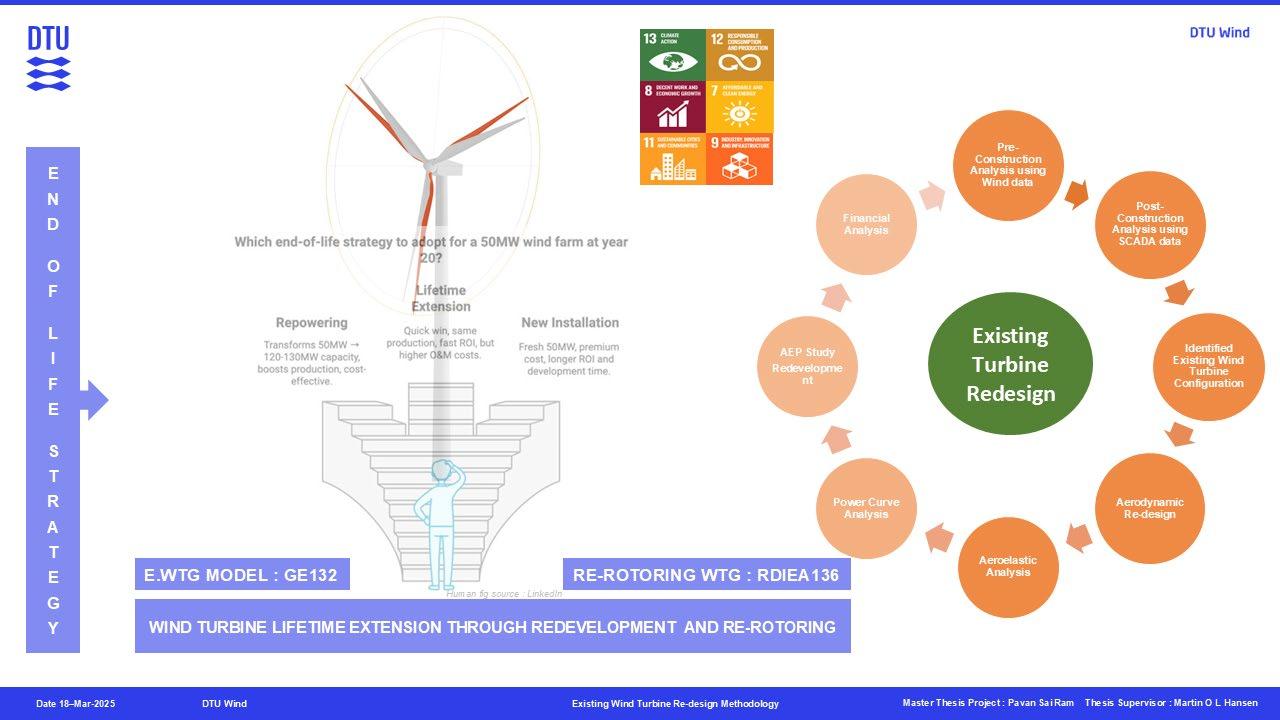
Decarbonizing Maritime Operations: An Impact Assessment of Green Shipping Corridors
A. Machholm, I. Vlasakoudis and B. Ganapati Business Analytics, Technical University of Denmark
INTRODUCTION
The maritime industry accounts for about 3 percent of global GHG emissions, and decarbonizing shipping will require implementation of carbon-neutral fuels. Green Shipping Corridors (GSC), defined as zero-emission maritime routes, gained prominence after the Clydebank Declaration at COP26, but there is a need for a comprehensive impact assessment methodology for such corridors as current studies are largely at the pre-feasibility stage. We develop an impact assessment methodology for GSC using a case study of the Esbjerg-Immingham DFDS corridor.
METHODOLODY
The project combines cost-benefit analysis and multi-criteria decision analysis techniques - a novel approach in the field, quantifying otherwise intangible impacts—assessing three different fuel alternatives. The study goes beyond previous studies of the Esbjerg-Immingham corridor by including all relevant stakeholder groups in the value chain (fuel producer, port, shipping company, and shipping customer) to determine the feasibility of investing and partaking in the establishment of the GSC.
RESULTS
As the project is still ongoing at the time of application, RESULTS have not yet been finalized. At the conference, we will present our findings, including our impact assessment methodology, the specific identified impacts and decision criteria for each of the four stakeholder group perspectives.
CONCLUSION
We develop a comprehensive methodology for assessing Green Shipping Corridors (GSC) based on a case study of the Esbjerg-Immingham corridor. We identify costs, benefits and impacts for all stakeholders in the establishment of the GSC, resulting in a working methodology that can be applied to future scenarios later in the development of this or other green shipping corridors, and providing recommendations for the stakeholders of the Esbjerg-Immingham shipping corridor.
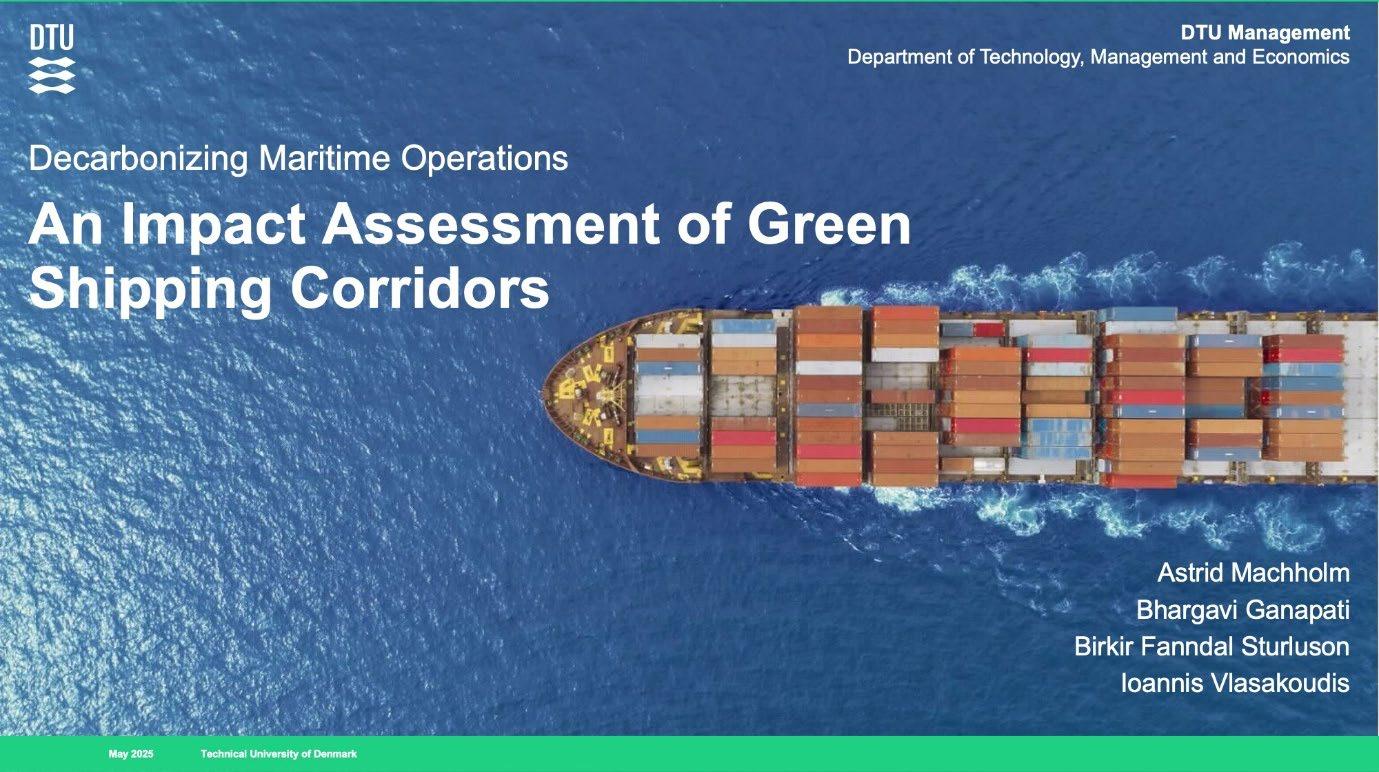
PROJECT NO.
Polyalloyed plating of 3D porous electrodes for Water Alkaline Electrolysis
M. Helge Applied Chemistry, Technical University of Denmark
INTRODUCTION
Hydrogen production is an essential part of the transition to renewable energy and plays a pivotal role towards achieving Net Zero Emissions by 2050. Current production methods via water electrolysis rely on ineffective 2D electrodes with low surface area and unused bulk materials. To address this issue a 3D Nickel electrode was previously designed at DTU energy, with heavily reduced material costs compared to conventional electrodes. This product needs further optimizations to enhance commercial competitiveness.
METHODOLODY
To increase the efficiency of the electrodes a series of different metals was incorporated into the nickel coatings to enhance potential in the hydrogen and oxygen evolution processes. These coatings were made using ultrasonic stirring to get stronger, finer and more homogeneous layers with better incorporation of co-deposits compared to magnetic stirring. This allowed for fine coverage of porous structures, increased lifetime and enhanced performances compared to electrodes of pure Nickel while using very little of the supporting metals.
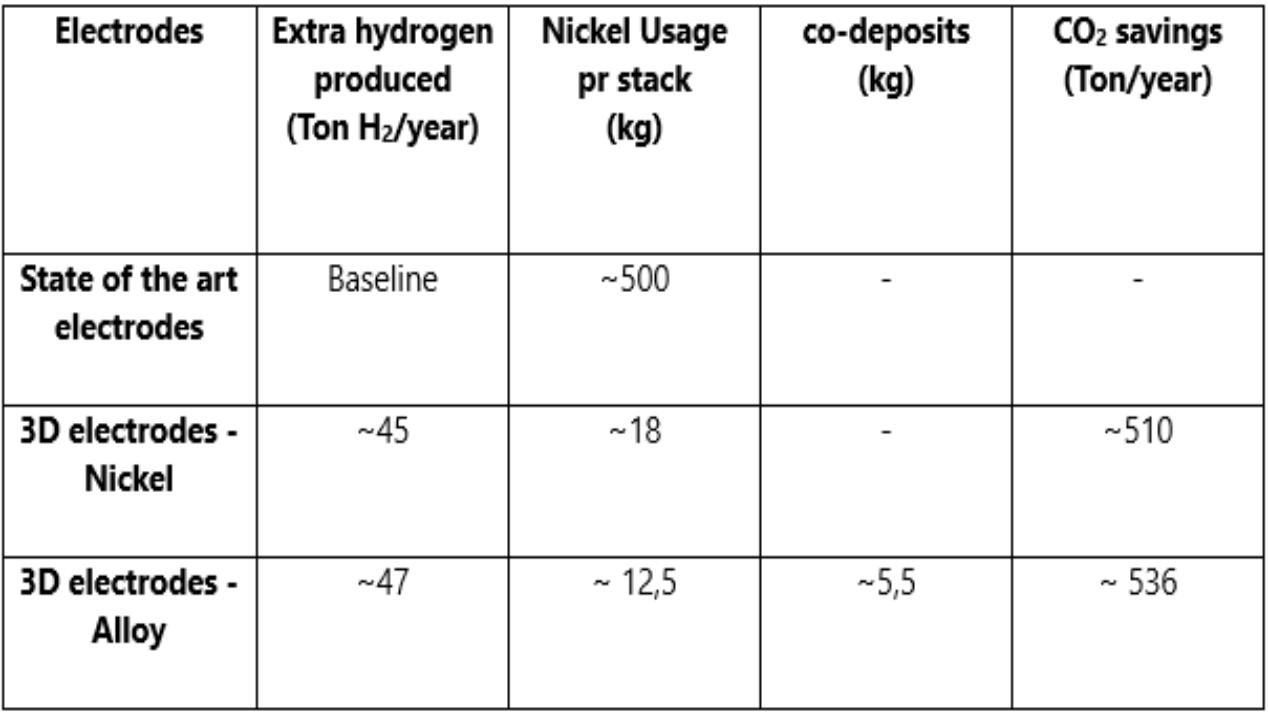
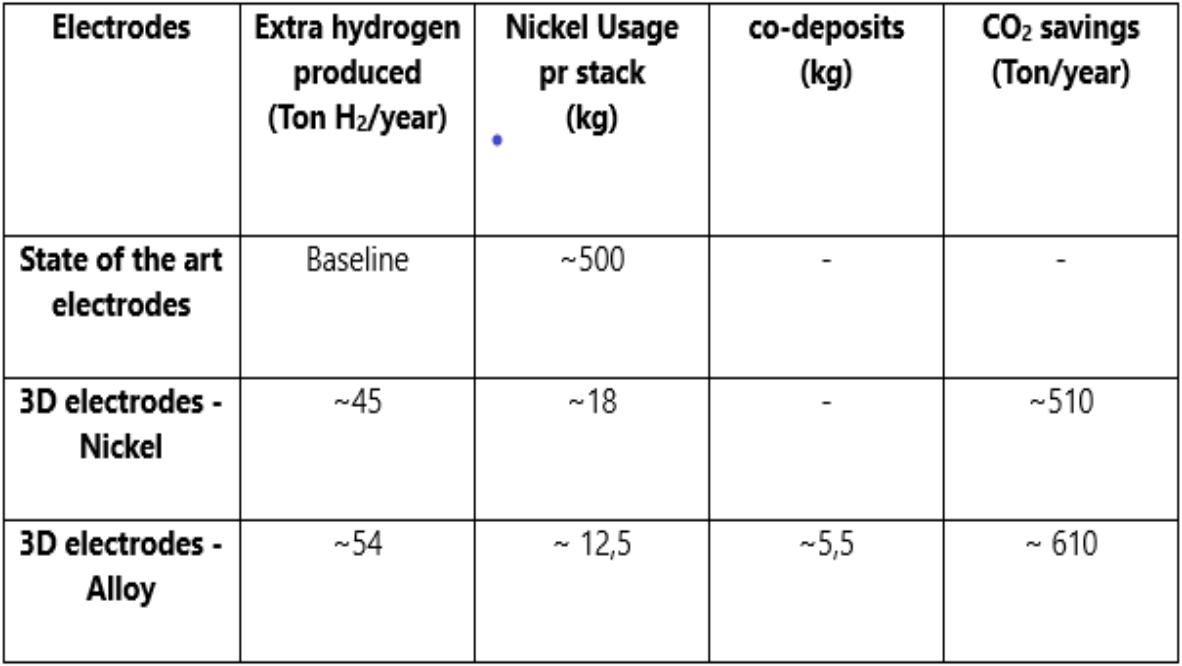
RESULTS
The resulting electrodes showed up to ~5 percent increases in performance compared to the pure Nickel versions and EDX analysis of the product showed a well-mixed alloy between Nickel and the co-deposited components. SEM revealed a finer more uniform coating compared to magnetic stirring leading to better corrosion resistance prolonging the lifetime of the electrodes. This should also allow for better utilisation of the porous structure due to better gas flow and more available reaction surface.
CONCLUSION
The enhancement of the structure and incorporation of additional metals in the reaction surface should allow for a substantial increase in the performance and lifetime of the electrodes further increasing their viability vs the current state of the art. Estimates of the pure Ni electrode predicted a +45-ton increase in H2 production with a 510-ton CO2 saving a year. With the proposed enhancements, these numbers are set to increase even further allowing for a faster and cheaper expansion of hydrogen production.
Heavy Duty EV Fleets as Reliable Ancillary Service Providers
M. Ibadullah Sustainable Energy Engineering, Technical University of Denmark
INTRODUCTION
Denmark's ambitious renewable energy targets have led to a significant increase in wind power integration, resulting in reduced grid inertia and increased demand for ancillary services to maintain frequency stability. While passenger electric vehicles have been approved by Energinet for providing such services, their contribution remains limited due to behavioral uncertainties. This project explores the potential of heavy duty electric vehicles (HDEVs) to provide reliable grid flexibility services, thereby supporting ongoing electrification.
METHODOLODY
This project evaluates the feasibility of aggregating HDEV fleets for DK2 frequency services (FCR-N, FCR-D, aFRR, mFRR, and FFR). Multi Agent Reinforcement Learning (MARL) at each charging port autonomously manages real time power flow, ensuring fleet charging deadlines and minimizing battery wear. A central aggregator coordinates fleet bids based on MARL generated flexibility curves, ensuring reliable delivery of committed frequency services within required response times, hence optimizing service provision.
RESULTS
Preliminary analyses suggest HDEVs could significantly surpass the 0.4 MW (FCR-N) provided by passenger EVs. This is due to their longer dwell times and predictable schedules which enable reliable frequency reserve contributions potentially up to several MWs per charging station (eg, 7.2 MW station at Køge). By replacing conventional fossil fuel based reserves, HDEVs directly support Denmark’s renewable goals (SDG 7) and incentivize electrification by offering additional revenue streams, and enhance overall grid stability.
CONCLUSION
This project pitches HDEVs as viable, impactful providers of frequency services, addressing the gap left by passenger EV limitations. Given Denmark's accelerated truck electrification initiatives underway including infrastructure, tolls and HDEV purchases, this is the optimal moment to integrate transport electrification directly with grid stability, therefore, boosting wind integration, reducing dependence on fossil fuel based ancillary services, and offering an economically attractive pathway for sustainable transport and energy systems.

DTU Charter
– make a sustainable difference
At DTU, we believe actions speak louder than words. That’s why we have created a charter to make sure that sustainability is – and will continue to be – a crucial cornerstone of all our courses and programmes.
The charter is our pledge to current and future students – it ensures that students obtain a deep understanding of sustainability and the development of sustainable solutions during their time at DTU.
In addition, we promise that education at DTU will provide students with the knowledge necessary for working responsibly with technology and for striving to make a positive difference in the world.
DTU: Creating value for the benefit of society
As a DTU graduate, I always focus on excellent research, and I work for:
Sustainable change
• I work with sustainability from an environmental, economic, and social perspective.
• I have the knowledge to advise on which solutions are most sustainable.
Technology for everyone
• I develop and apply technology responsibly and with awareness of the opportunities and consequences of technology.
• I strive for developing technology that makes a positive difference to people and society.
Social responsibility
• I collaborate across disciplines to develop solutions to the challenges the world is facing.
• I make my knowledge available and contribute to the public debate.
The 17 UN Sustainable Development Goals
Thank you for joining Green Challenge 2025

